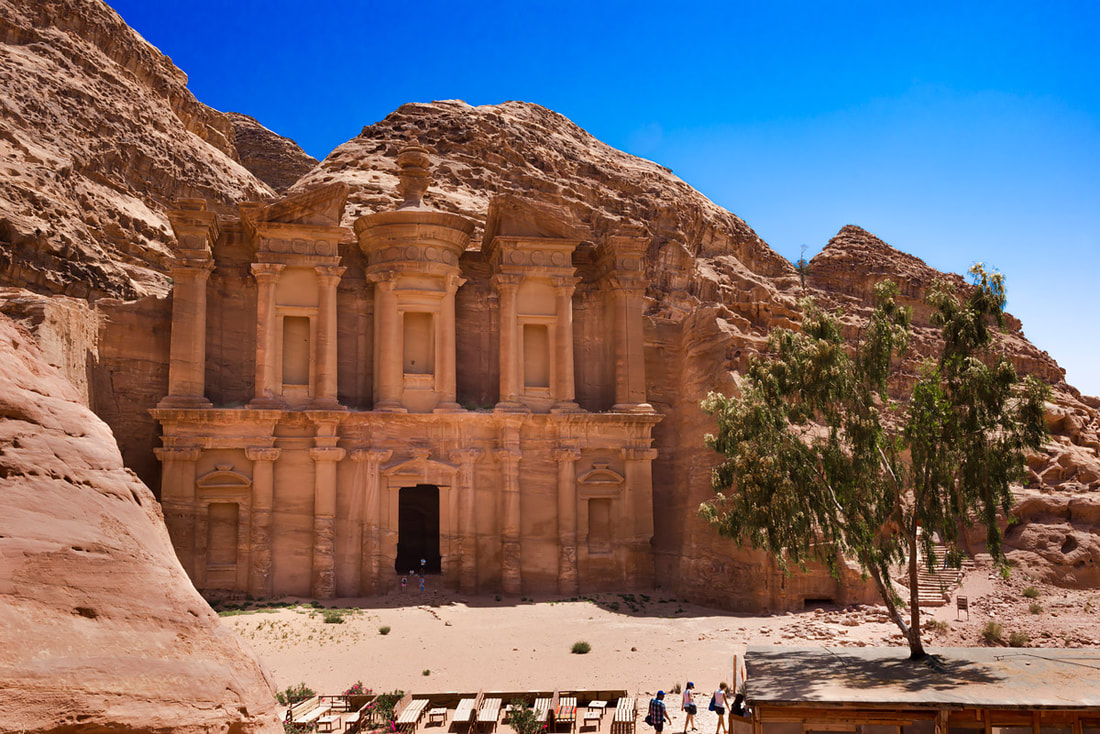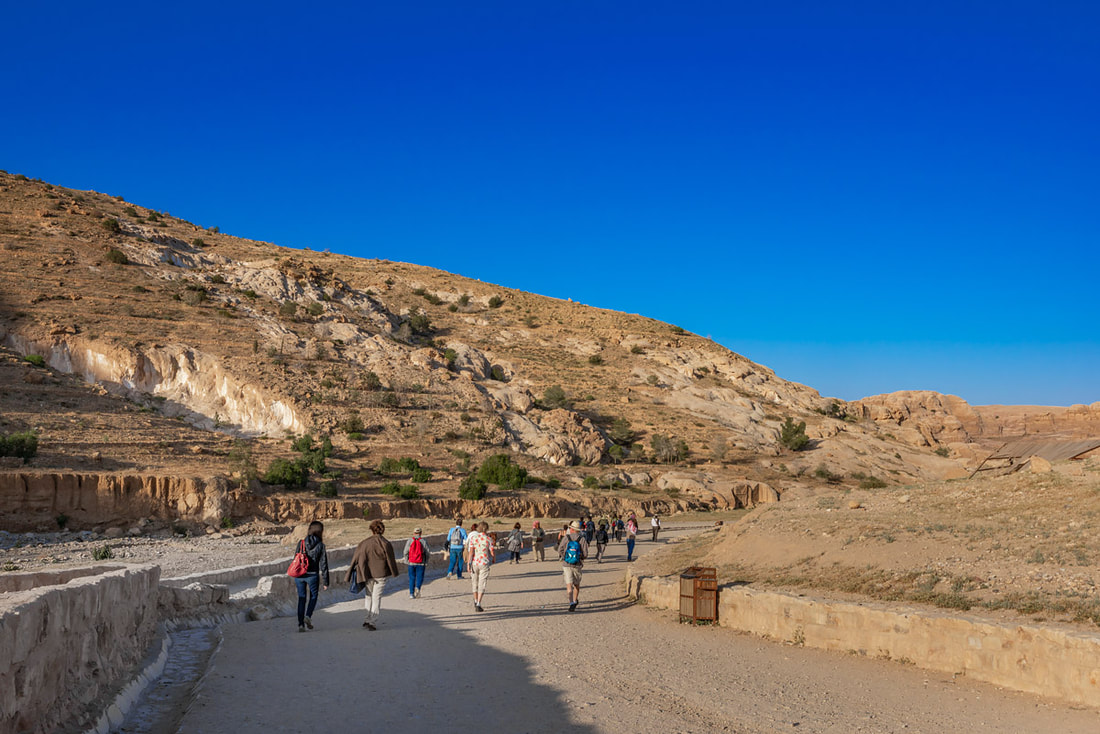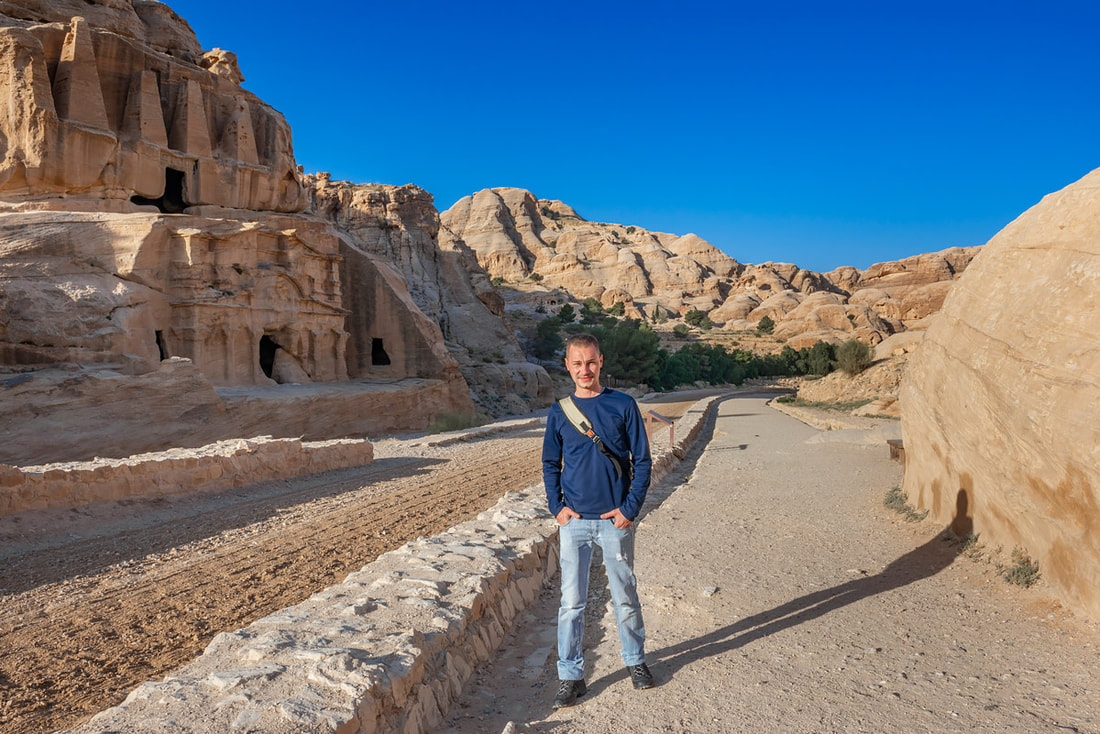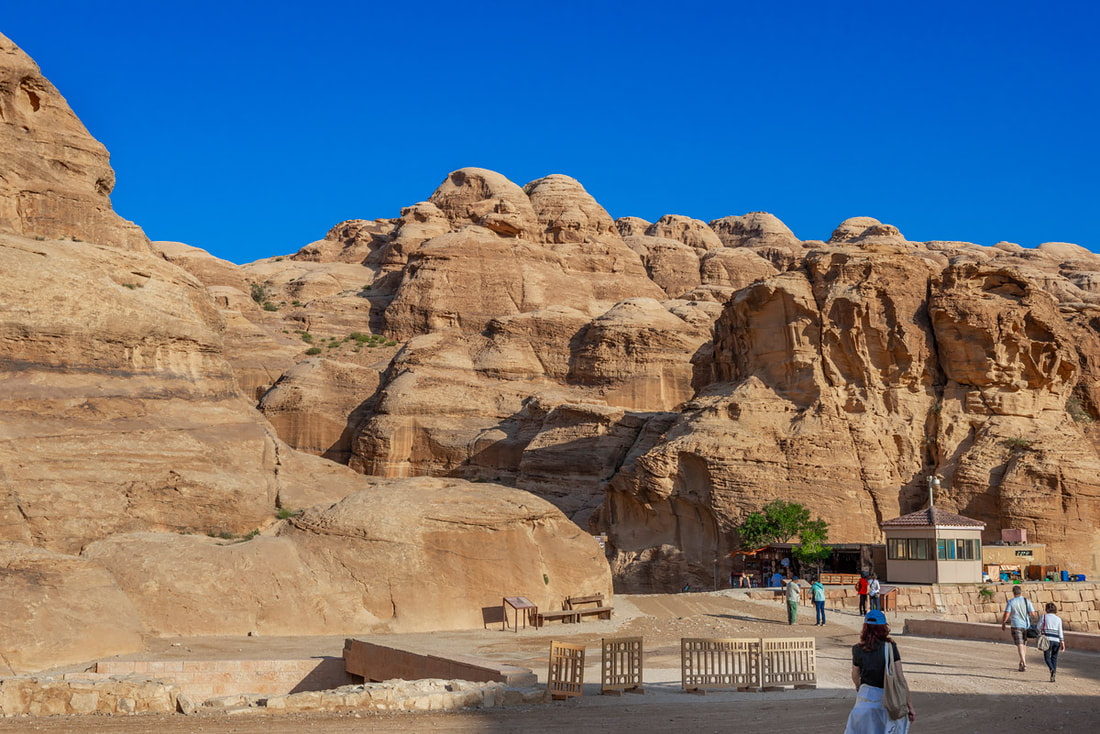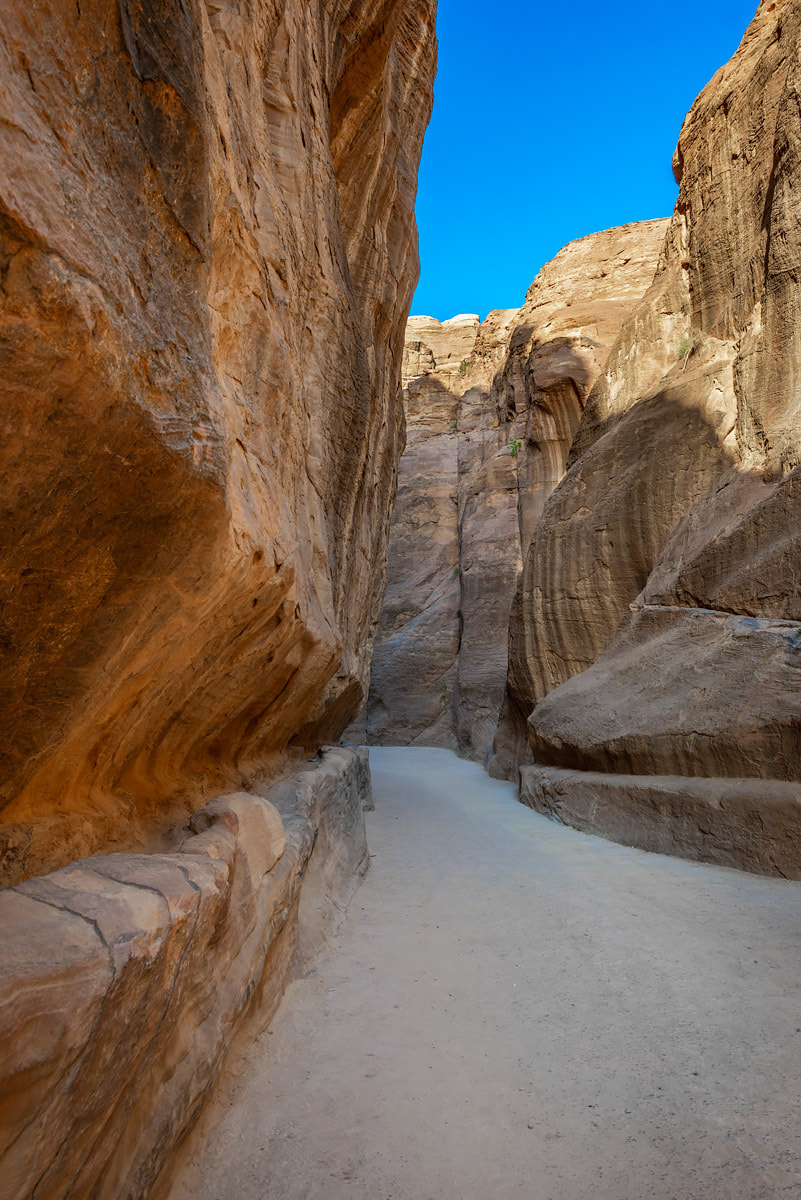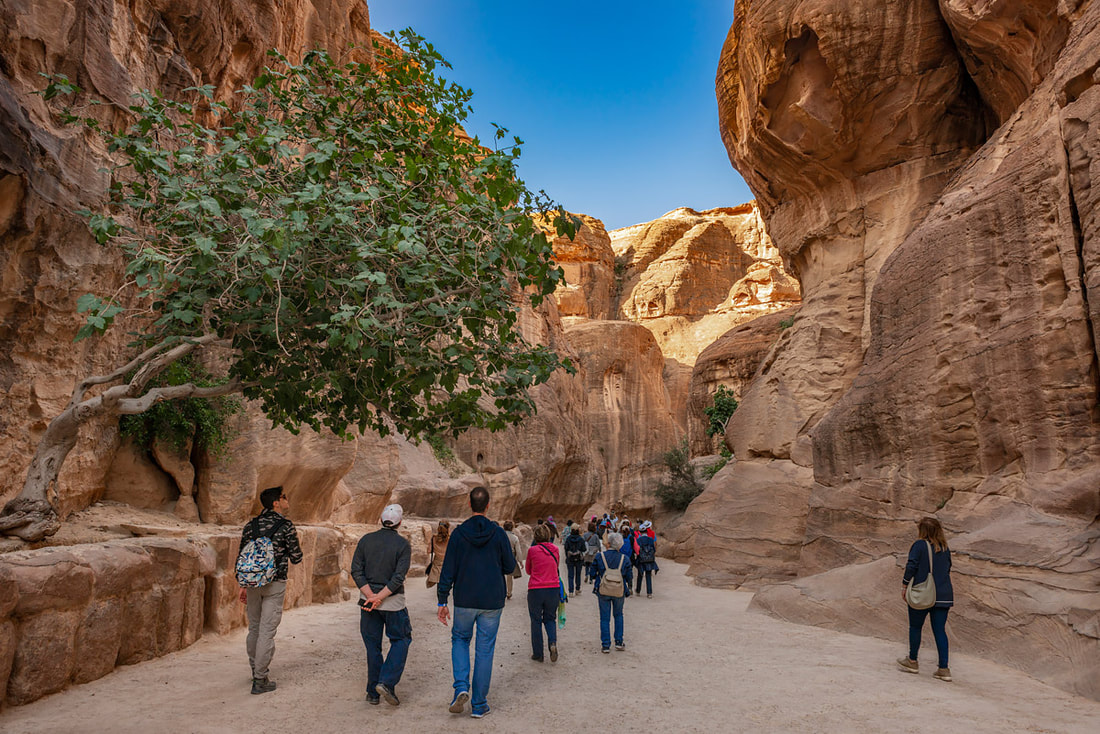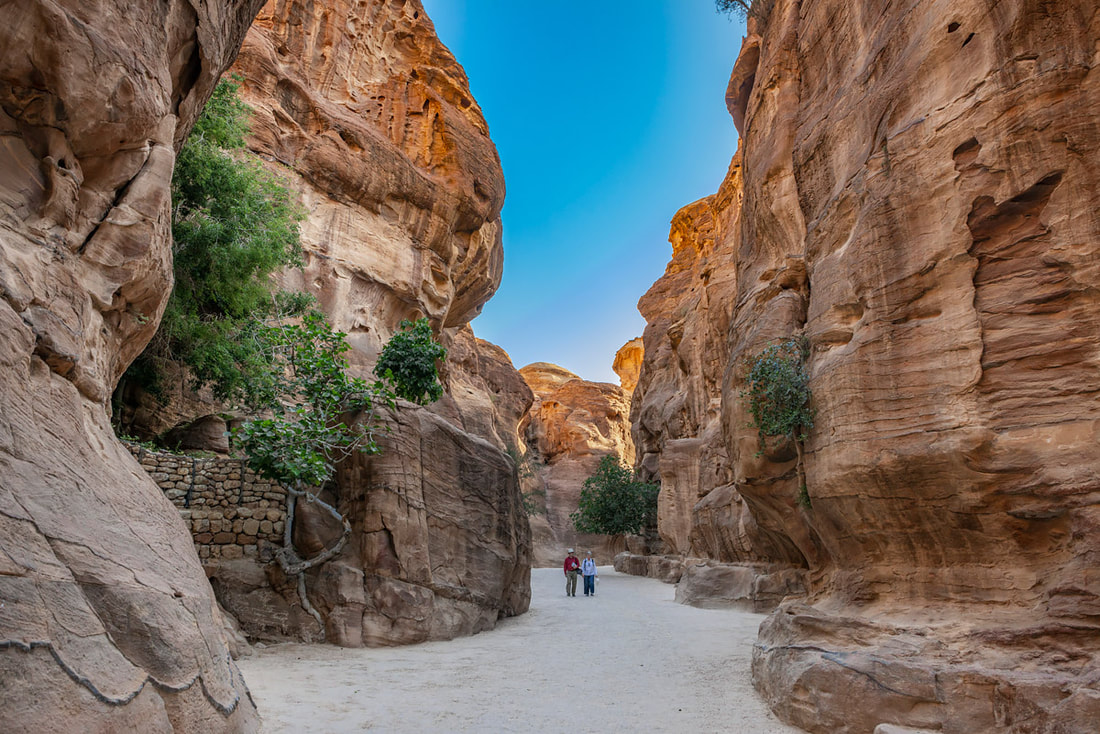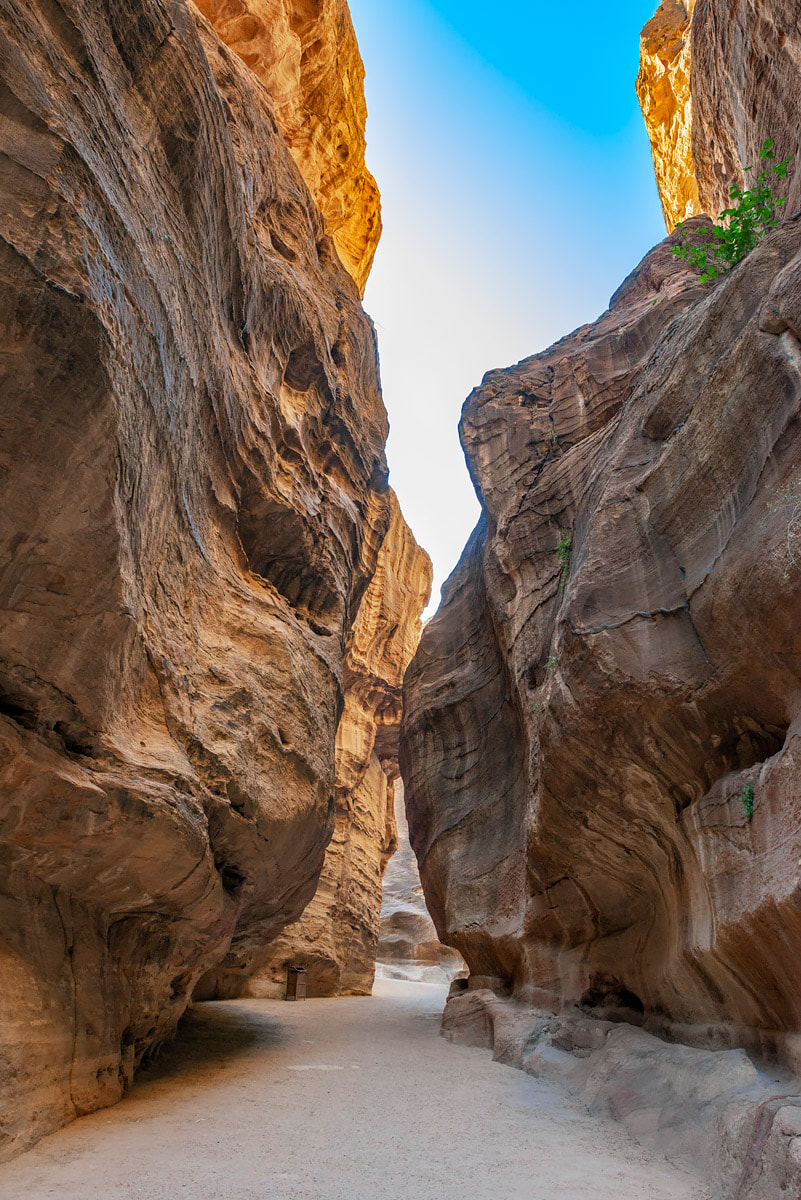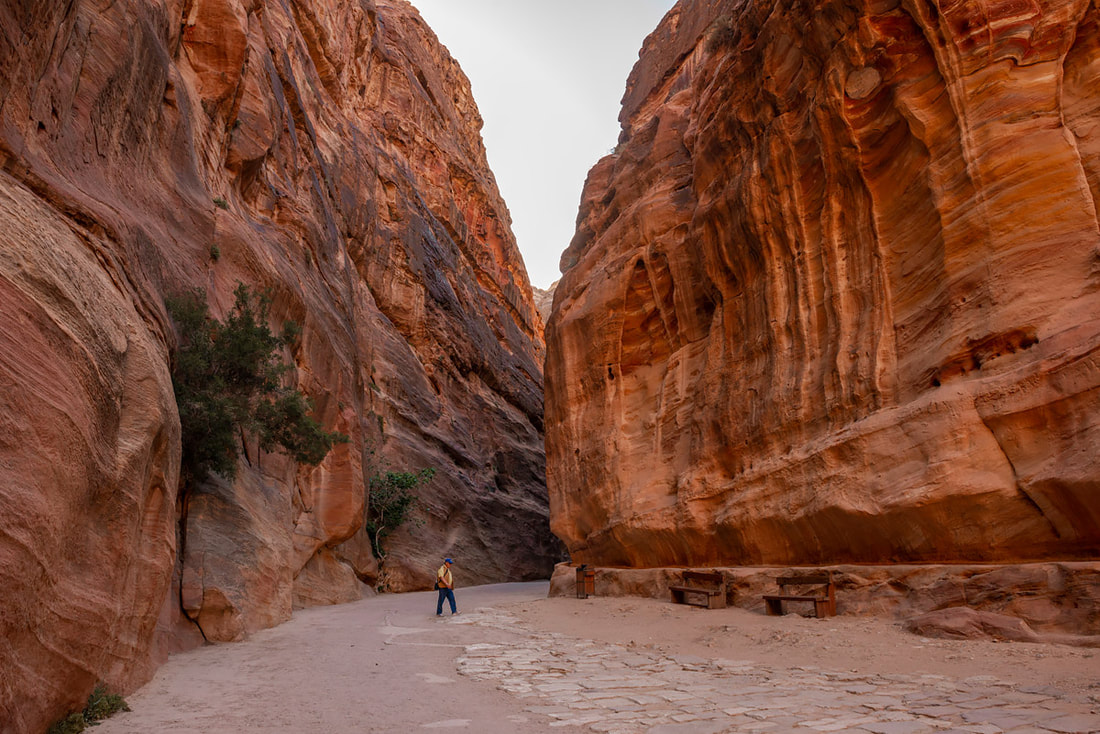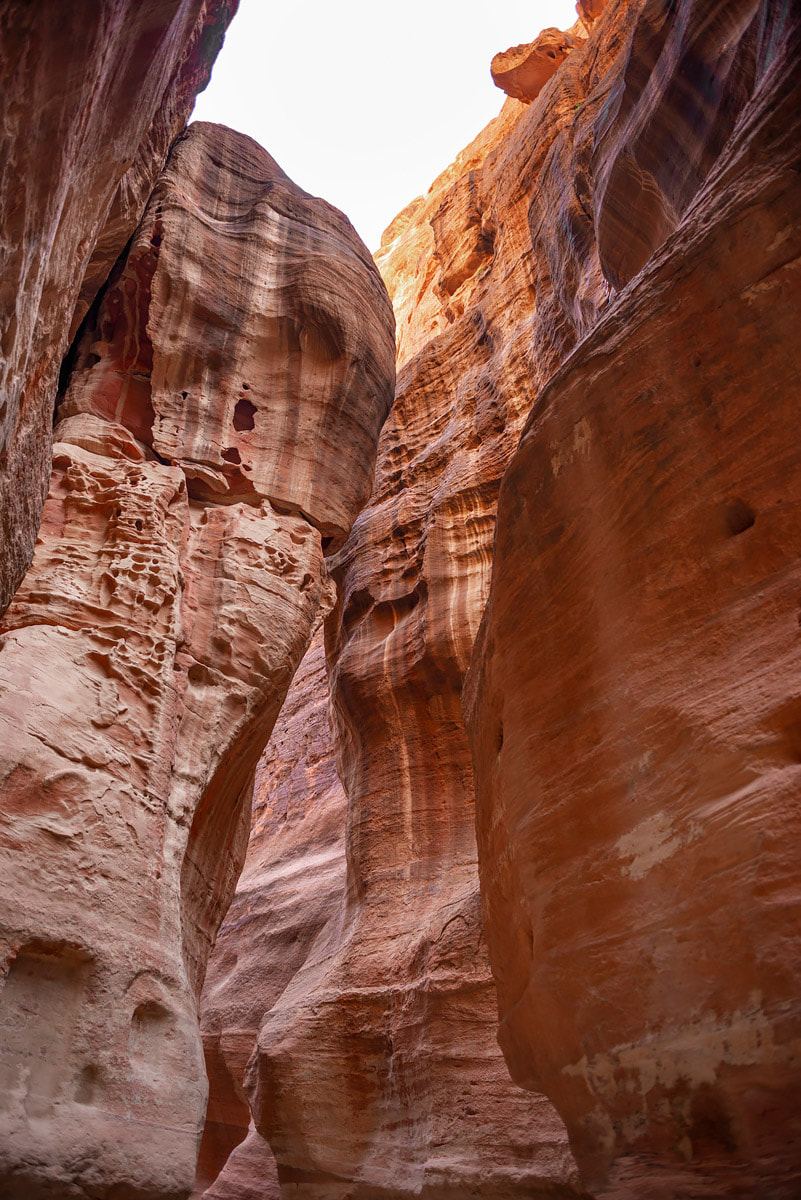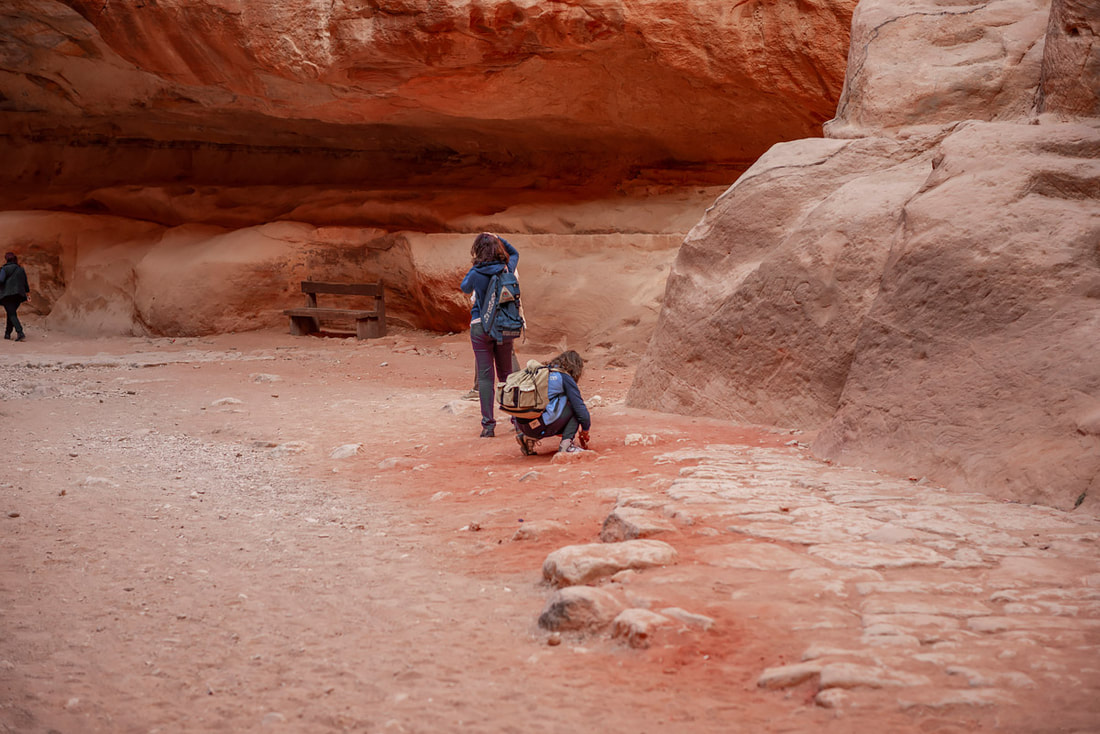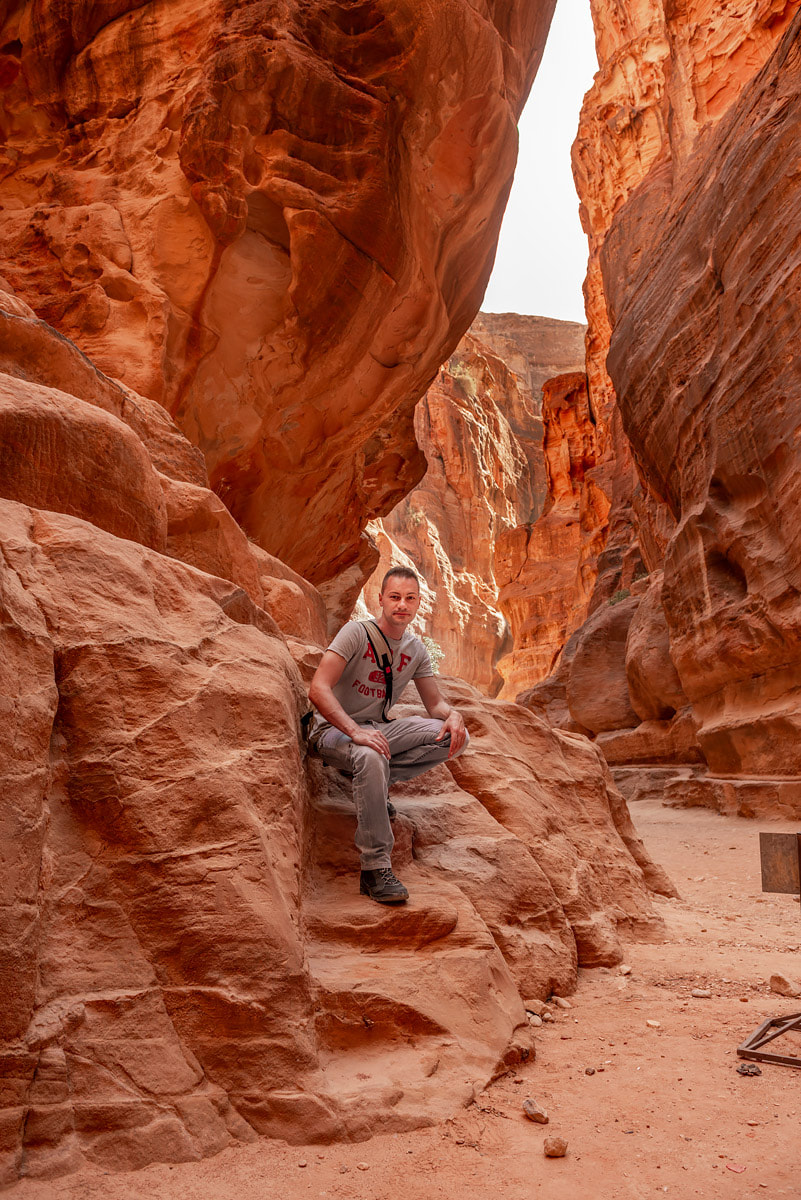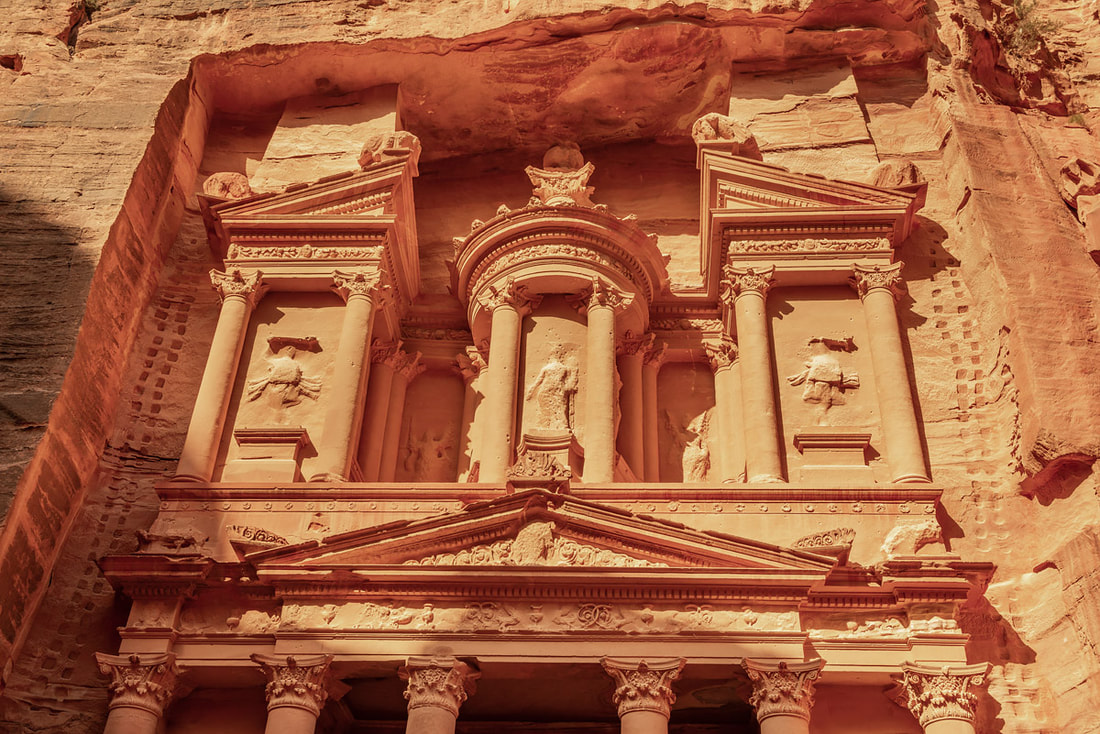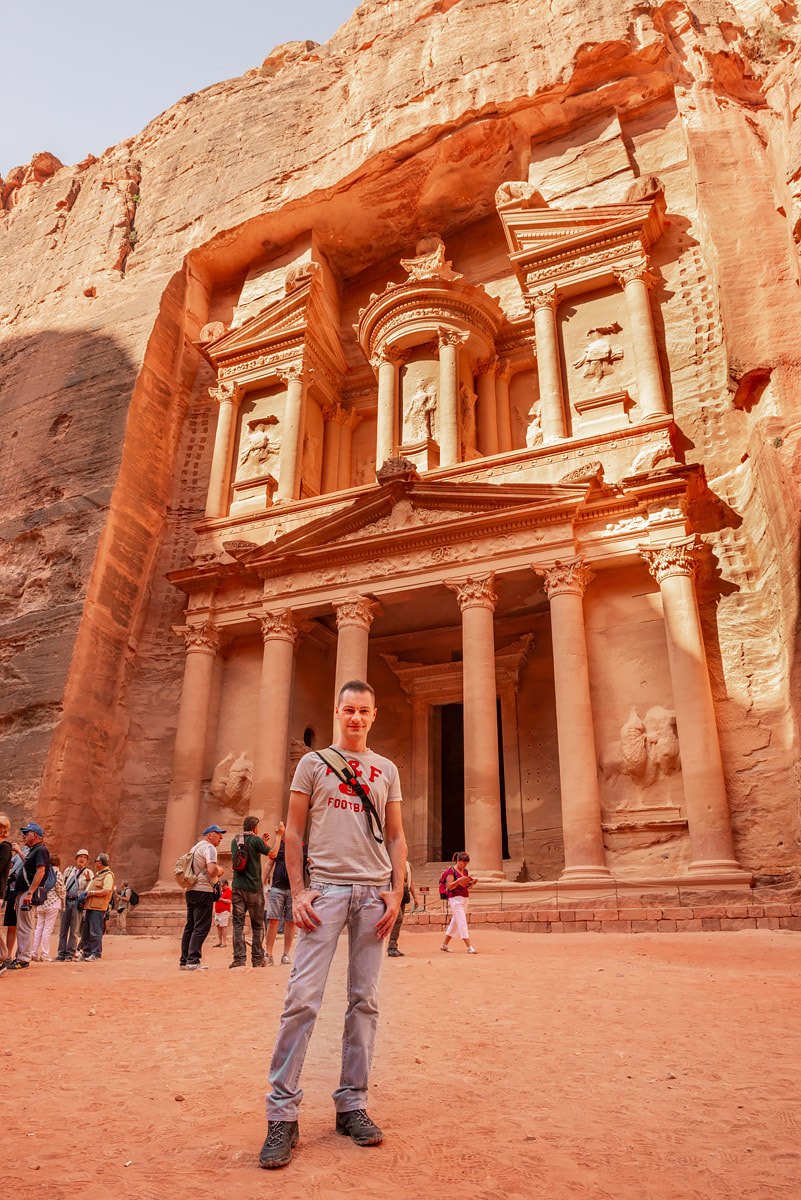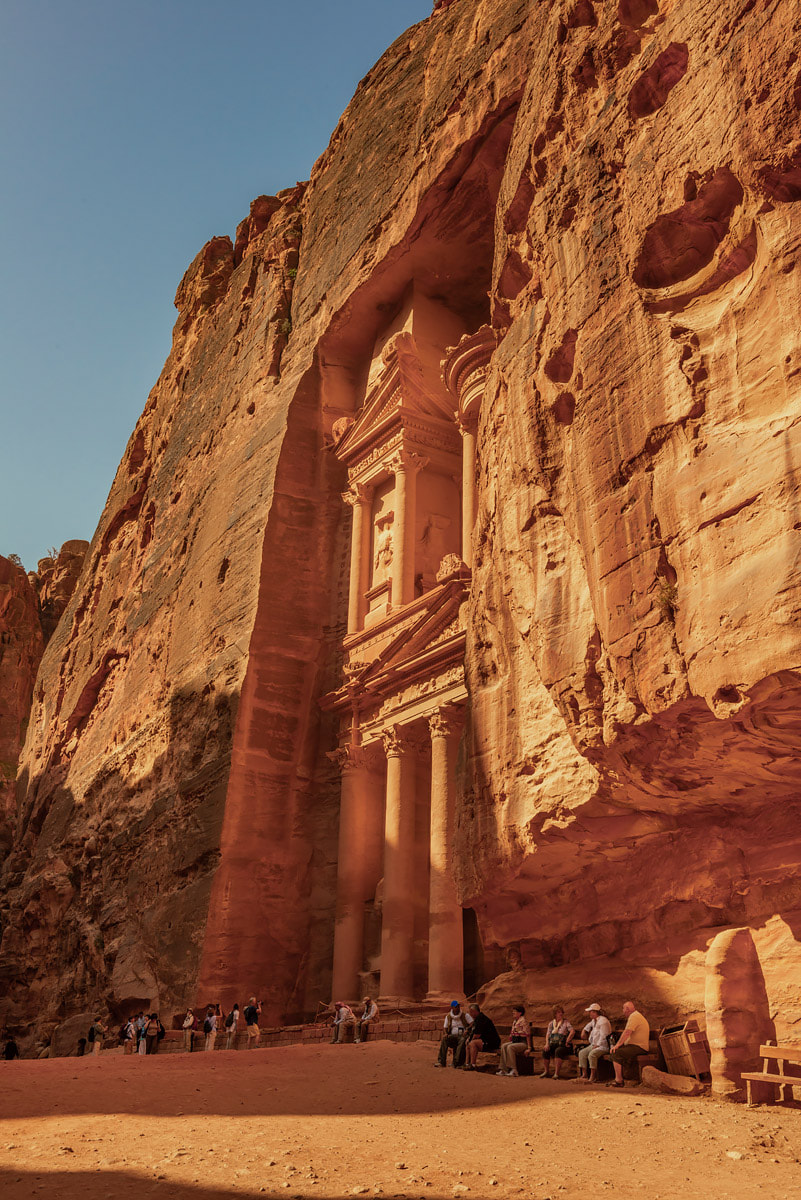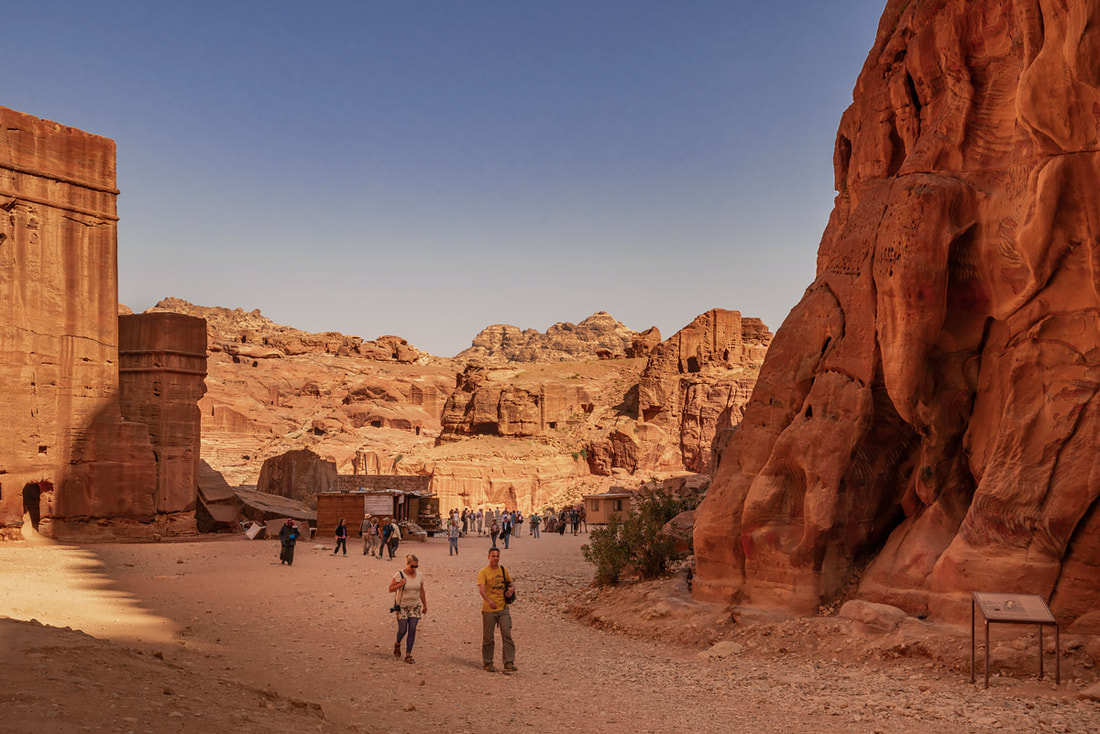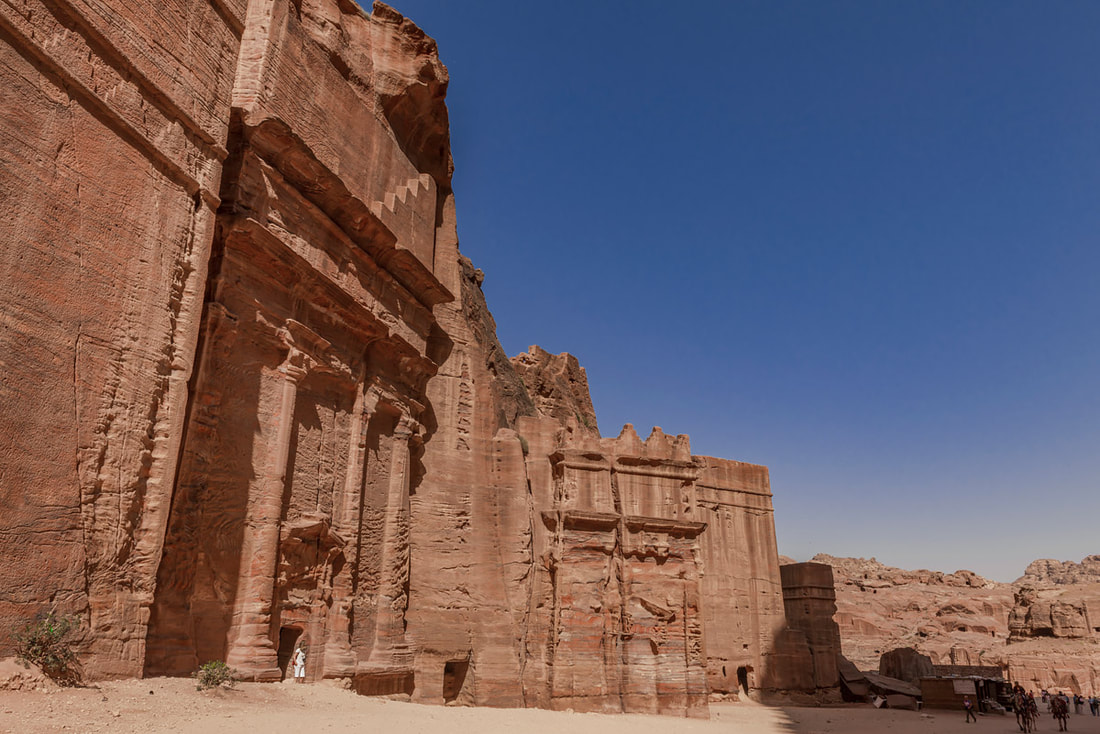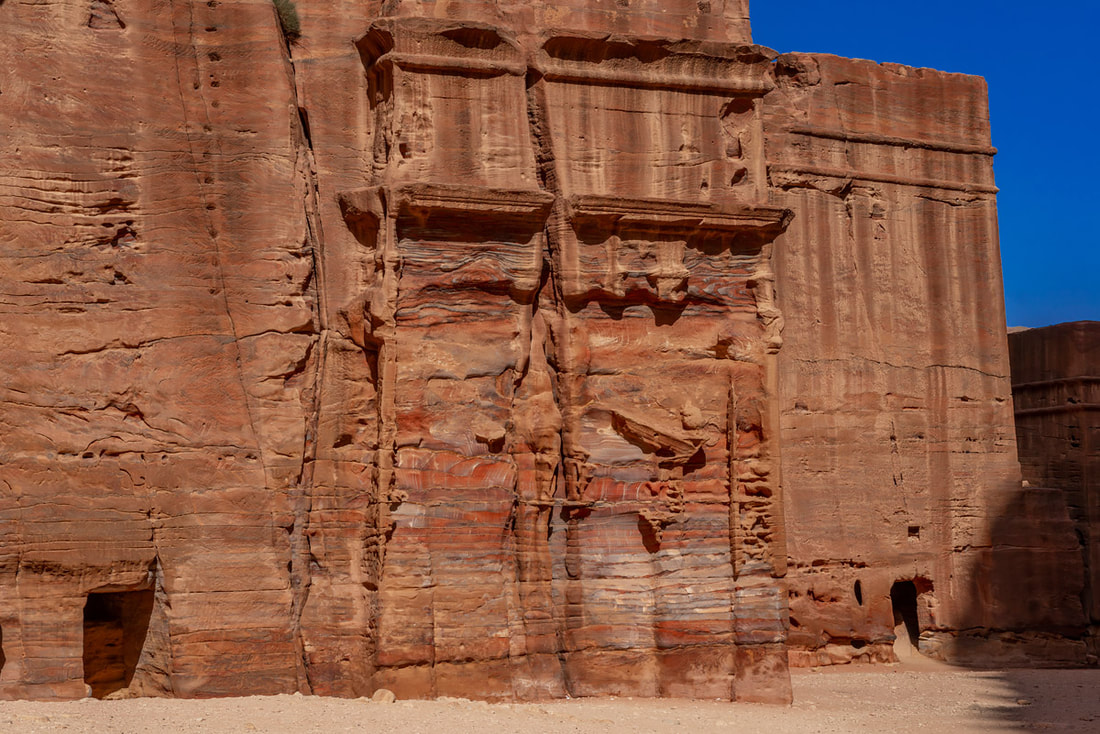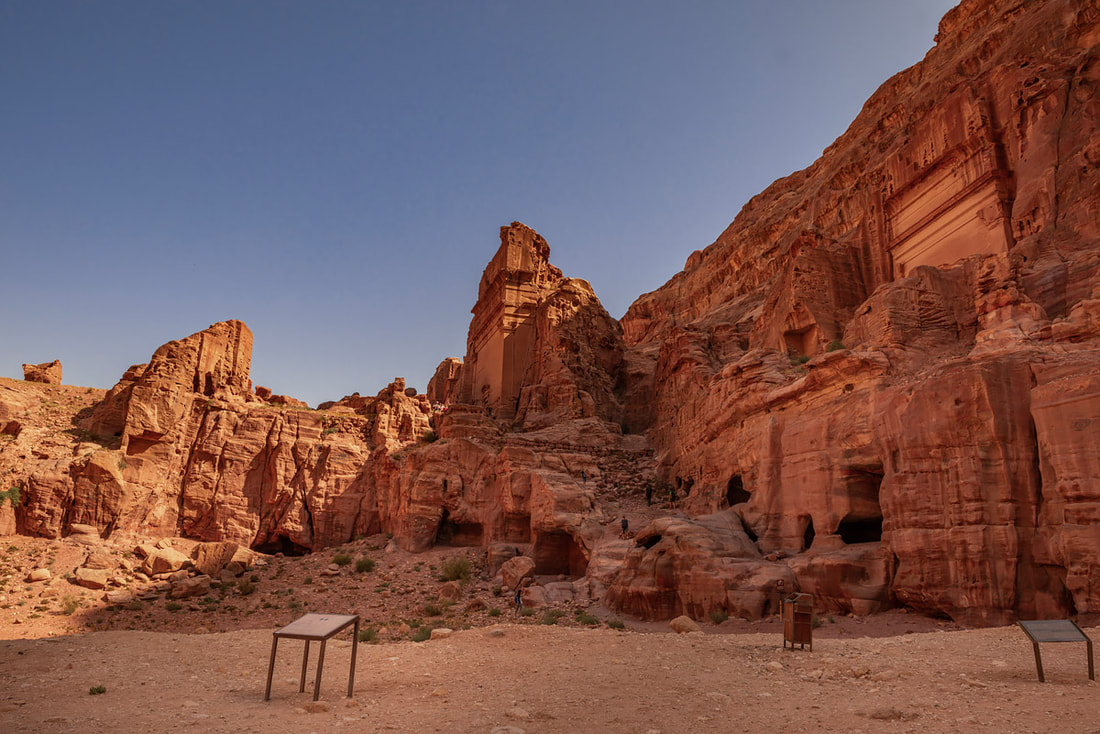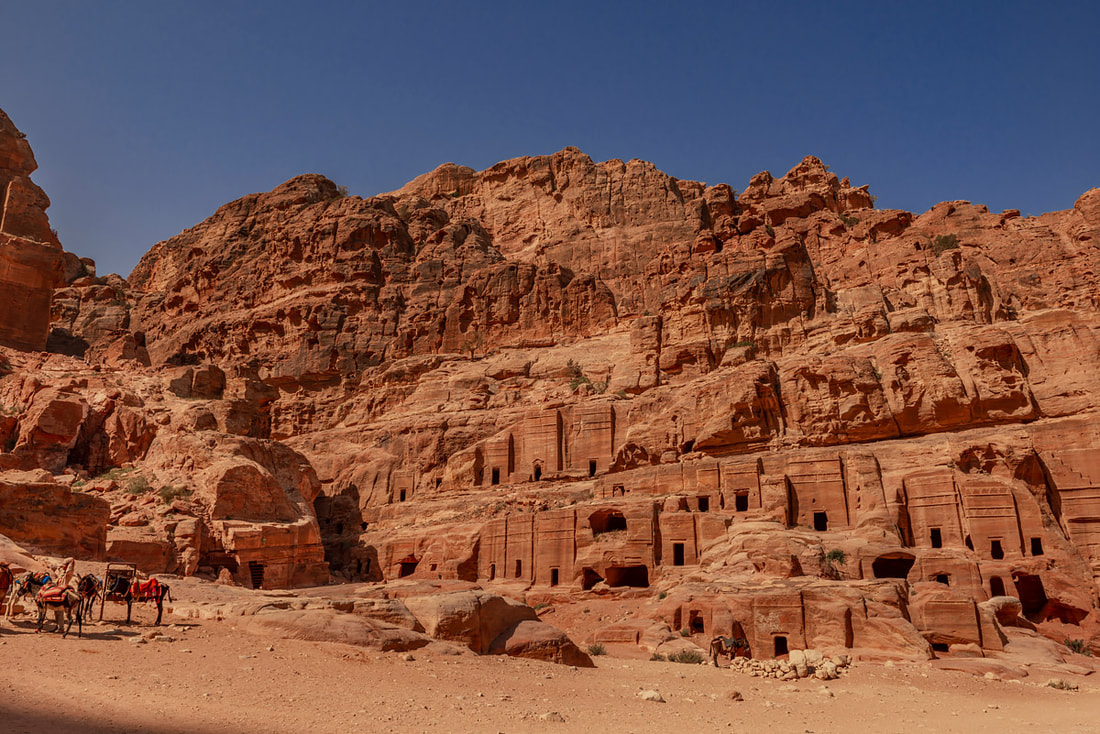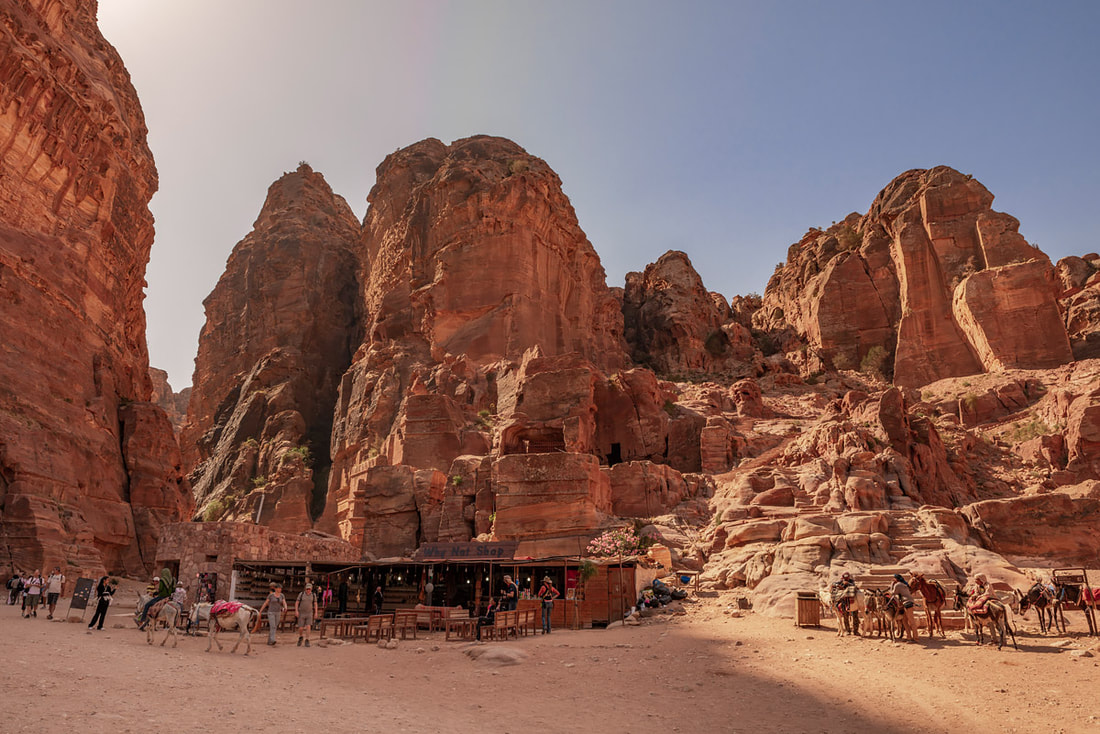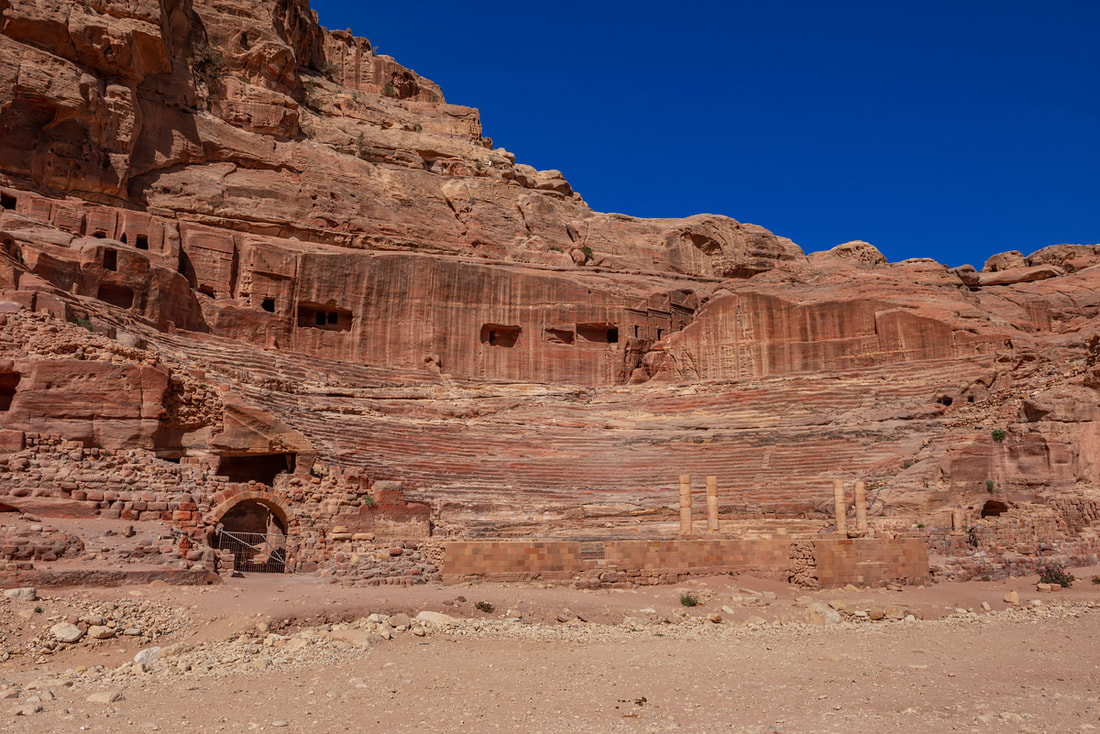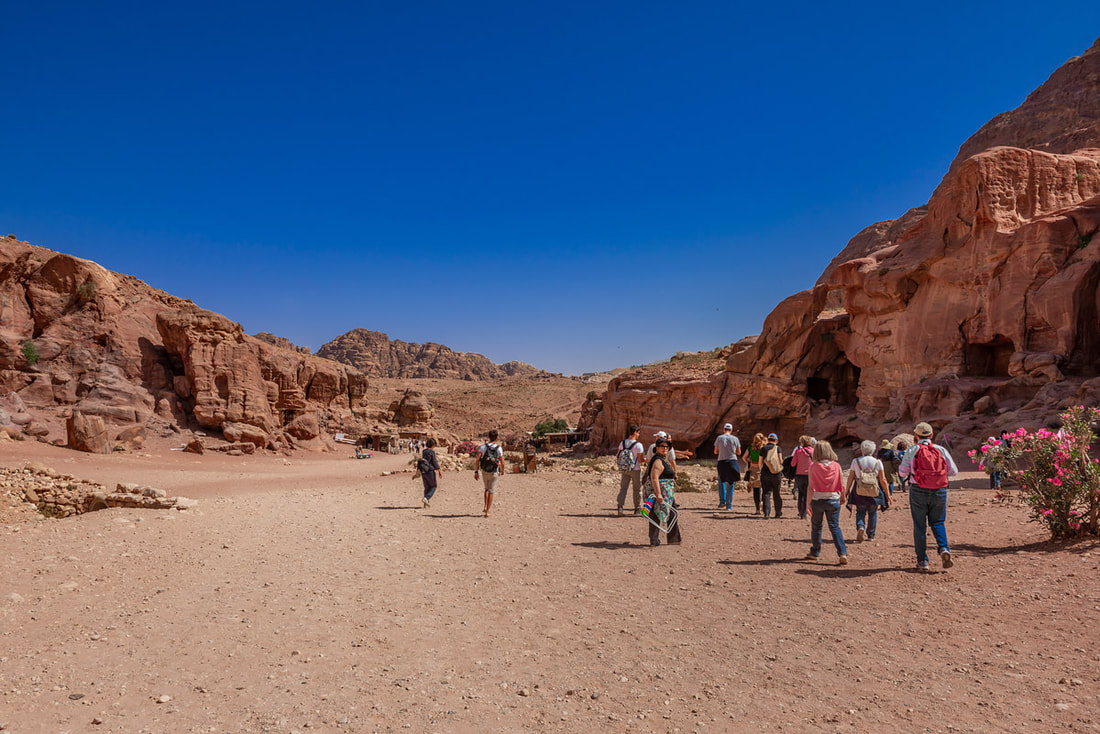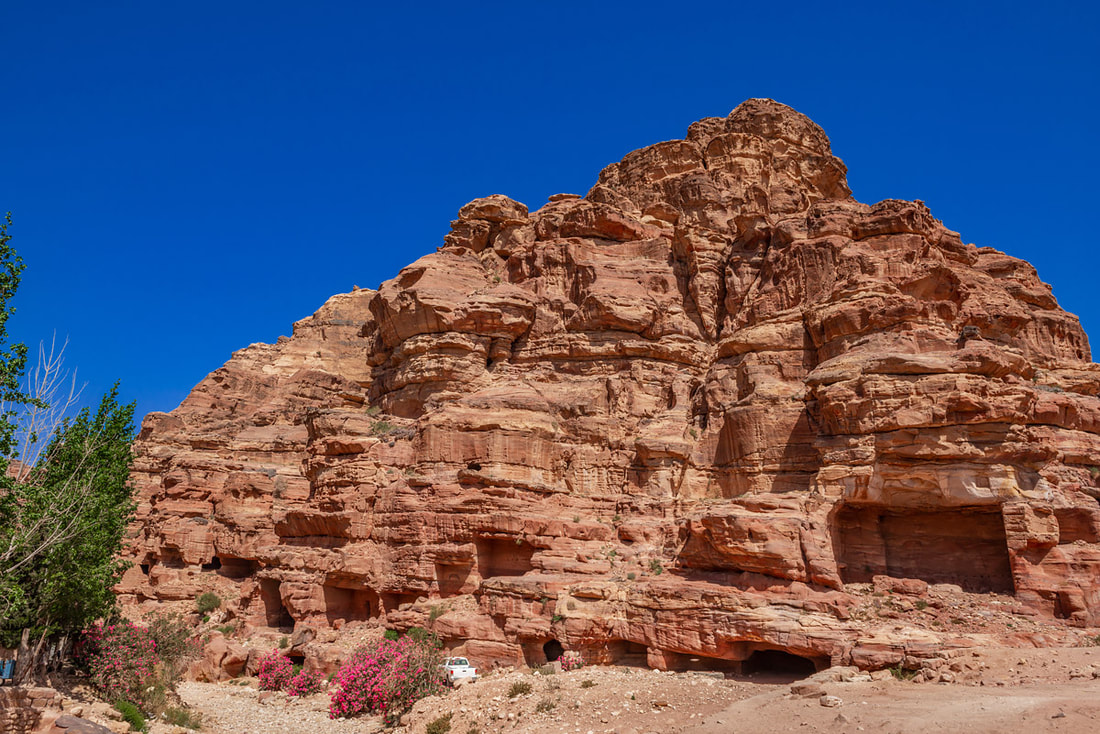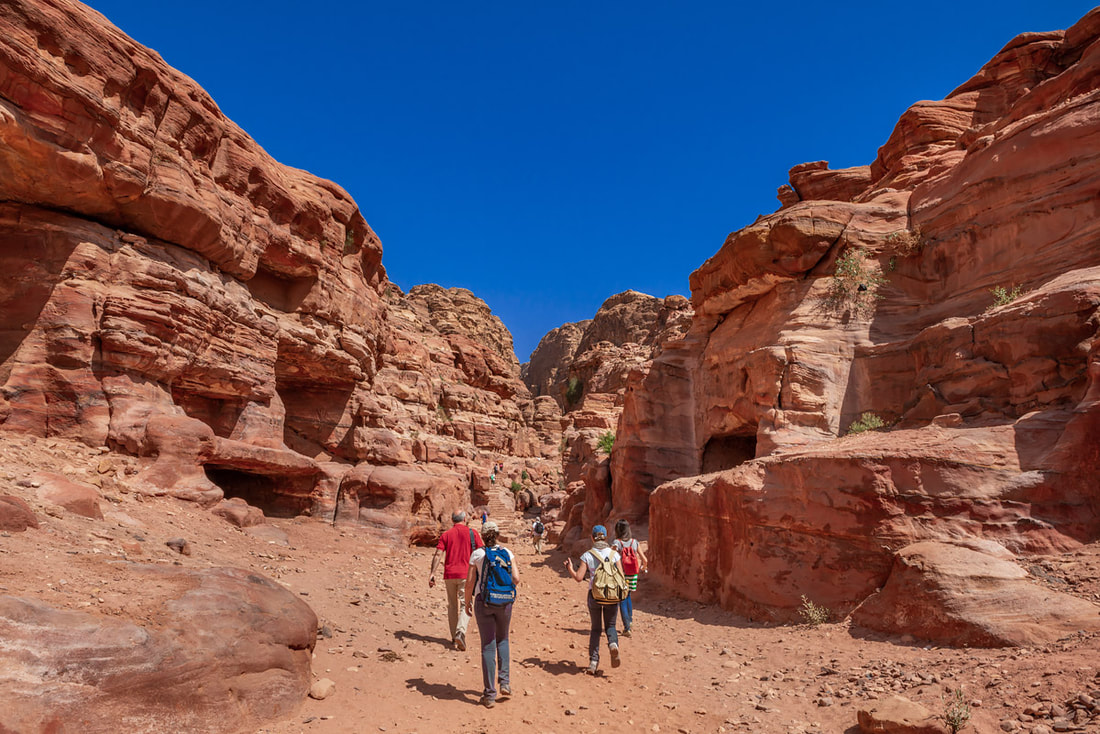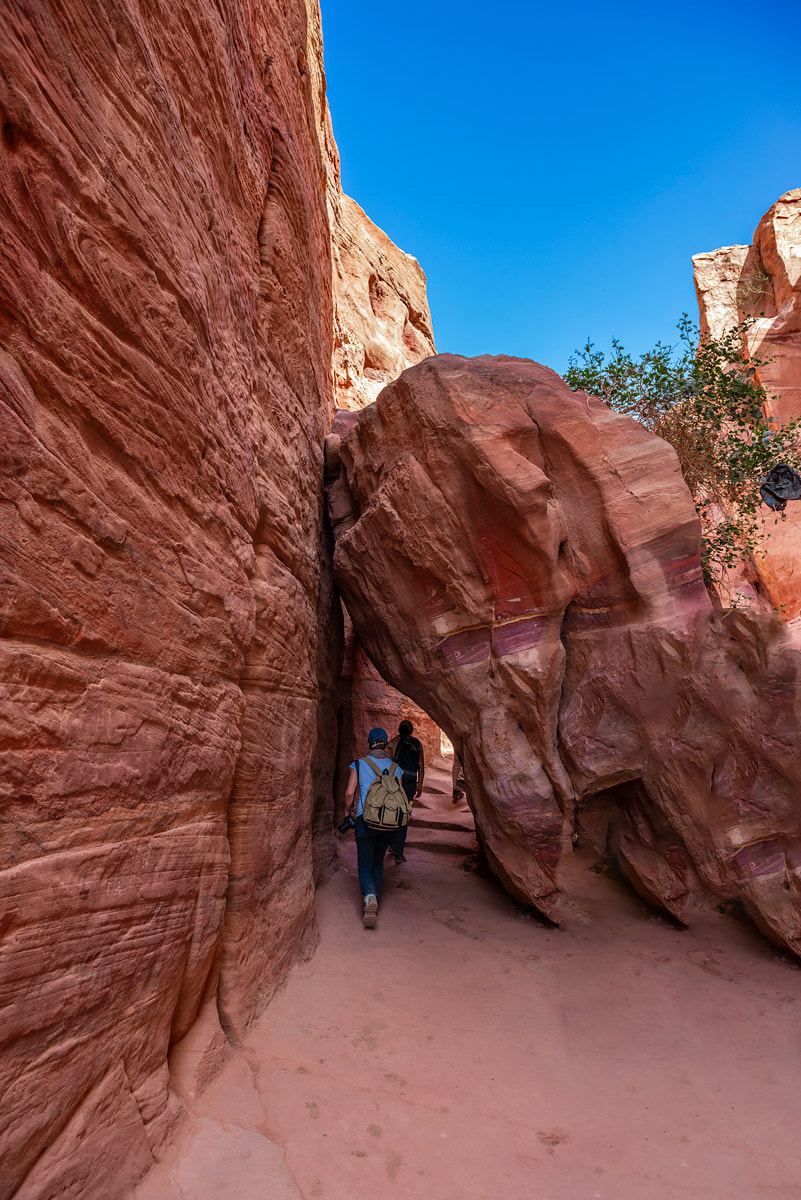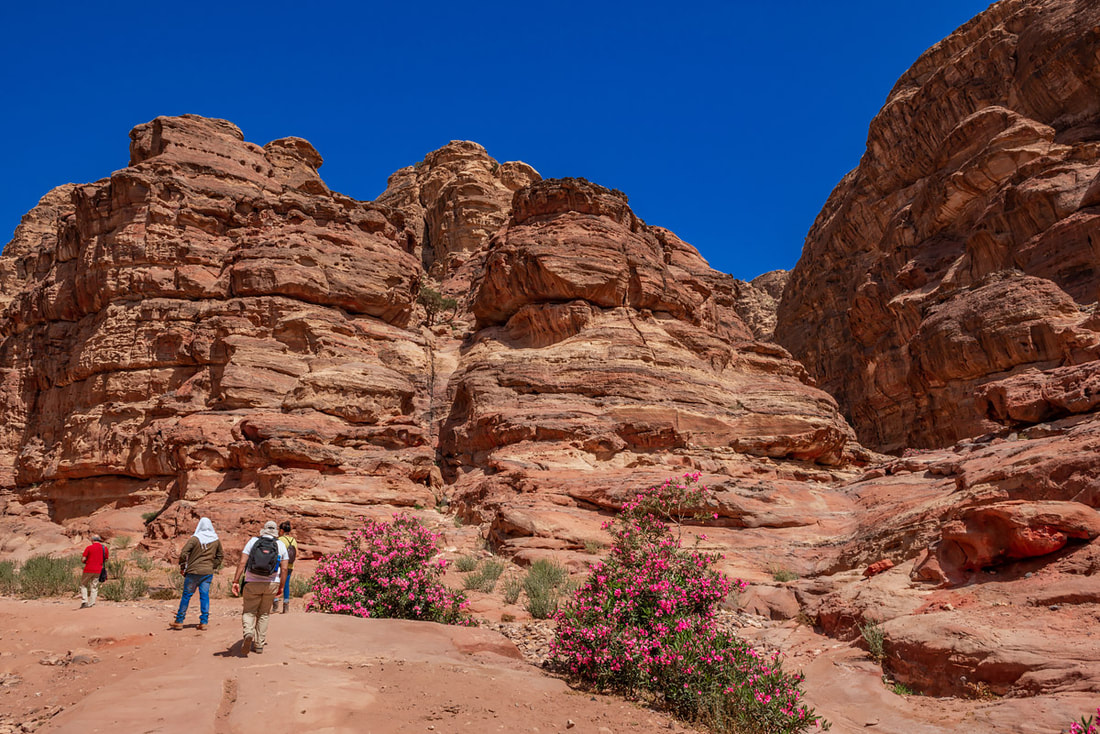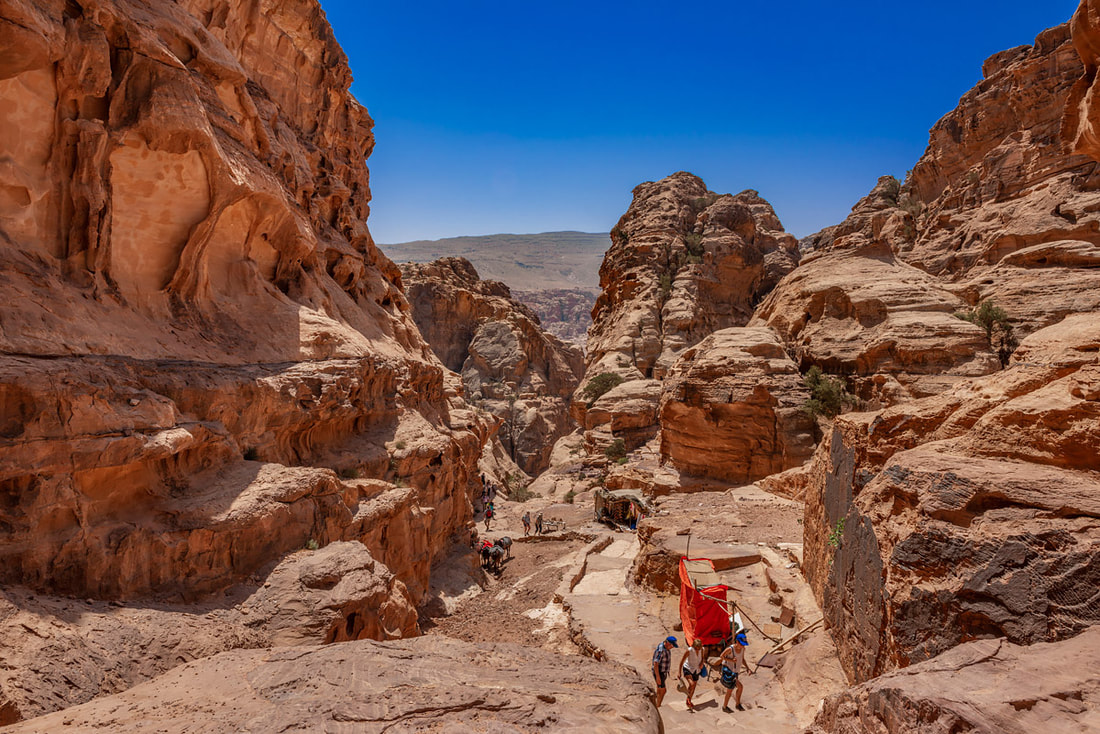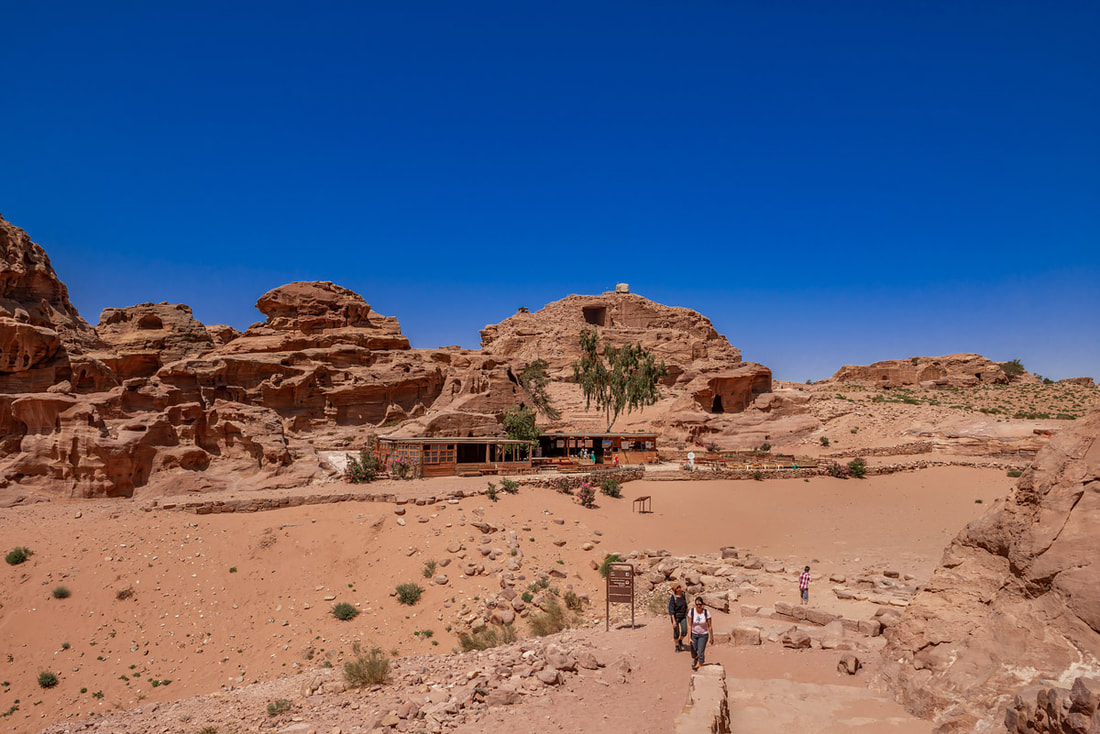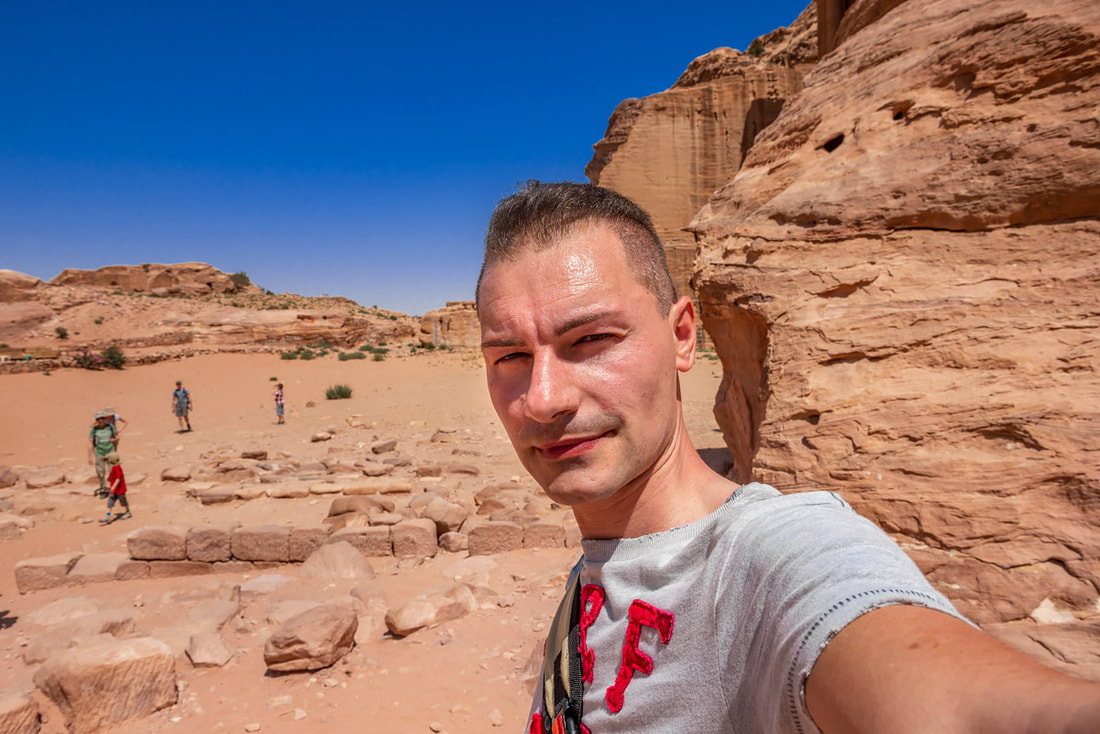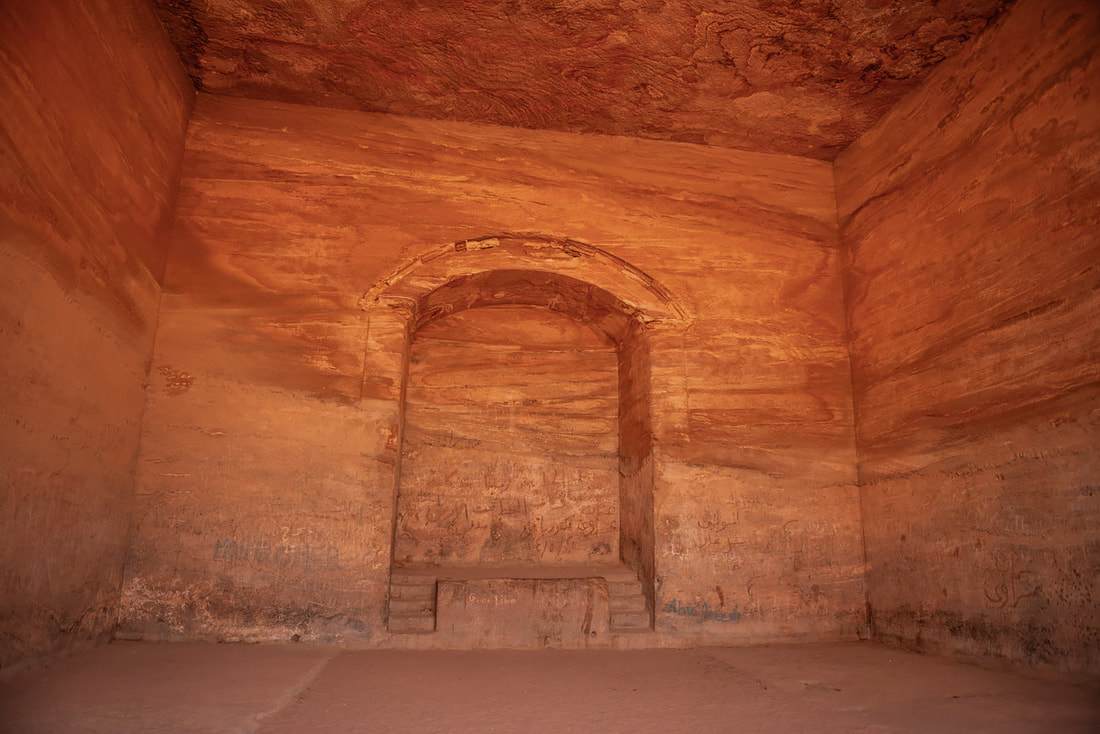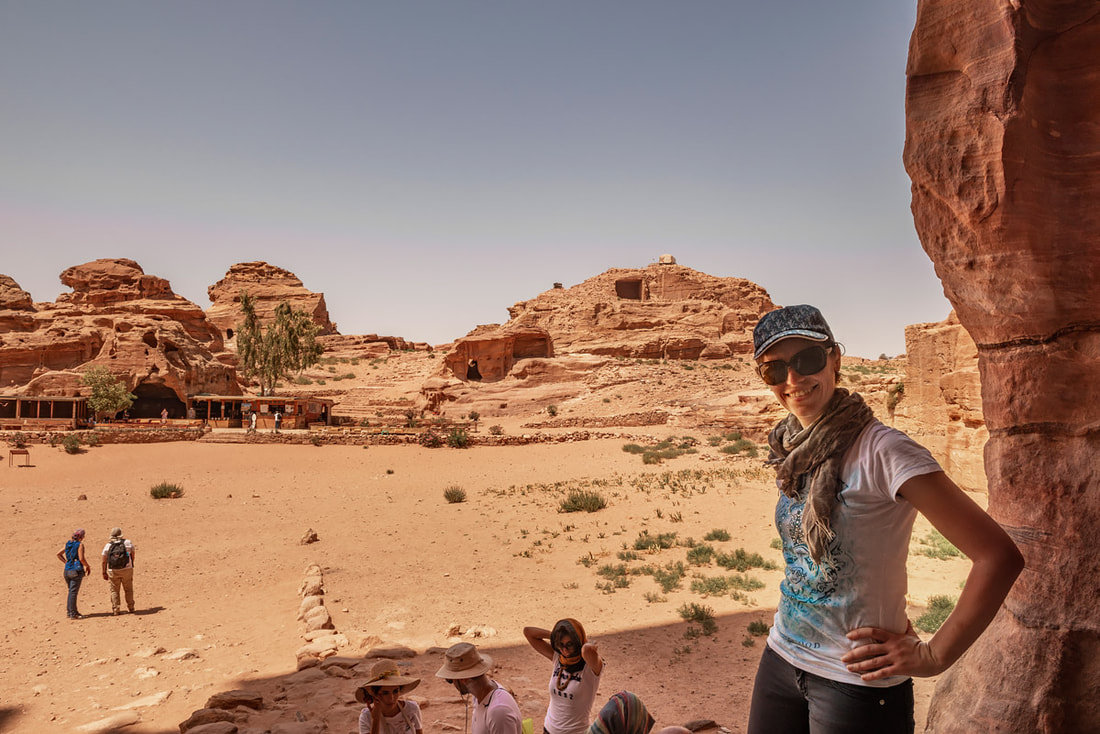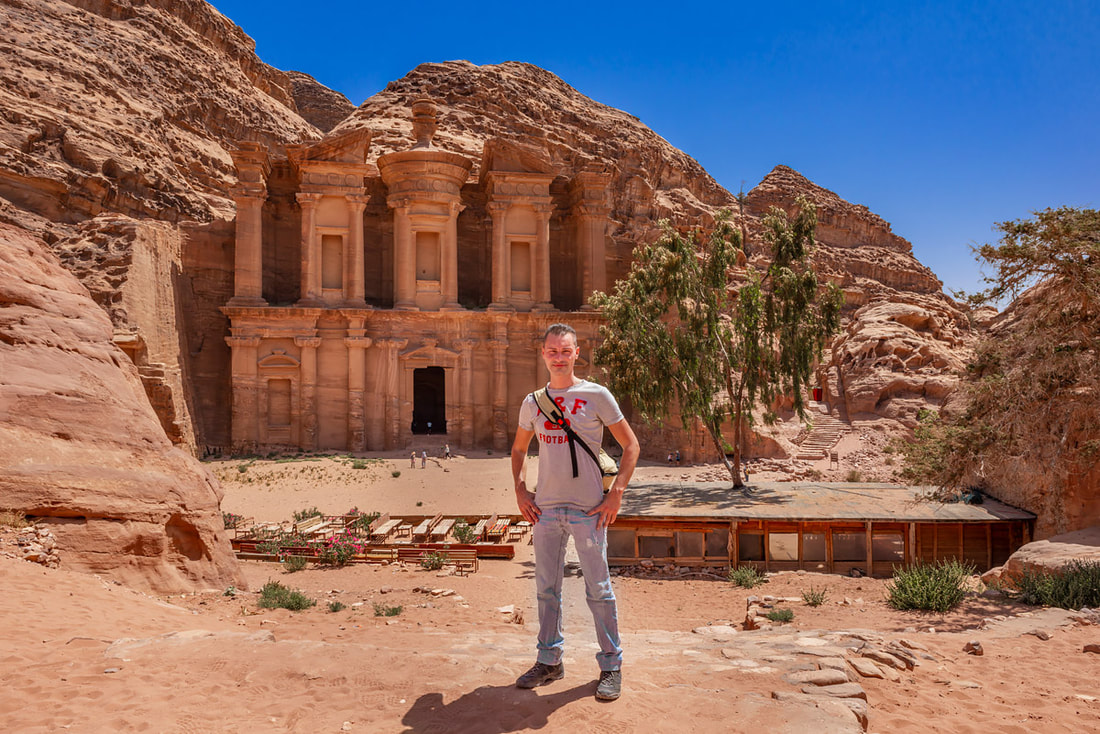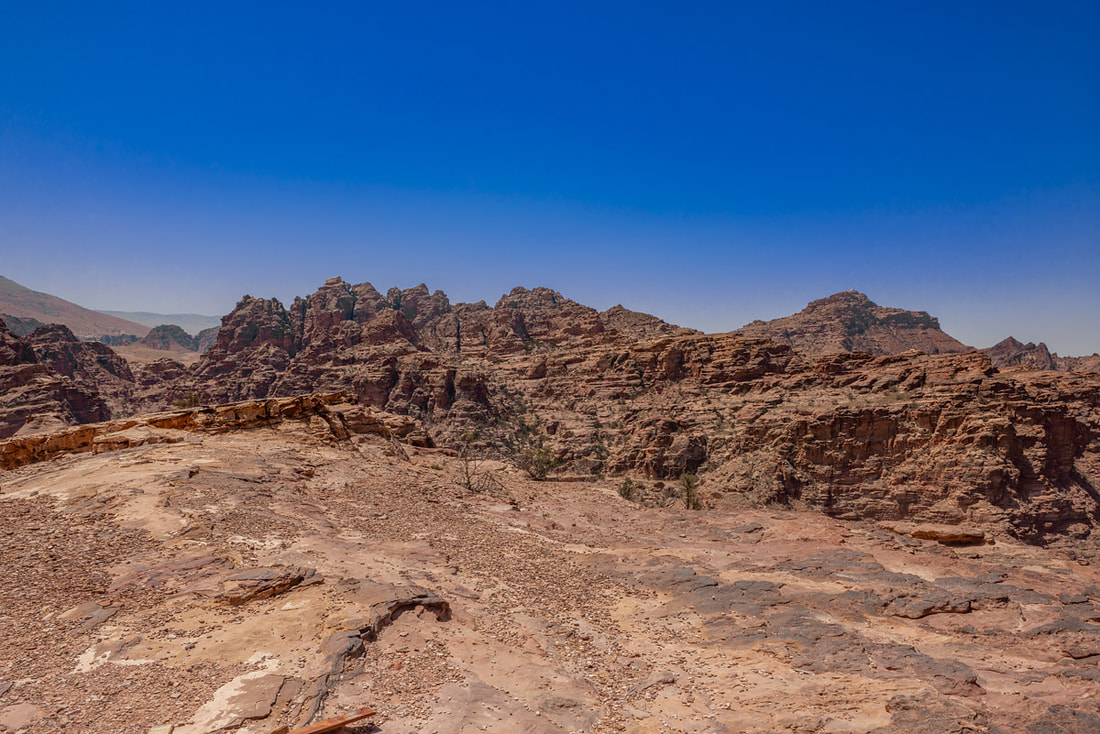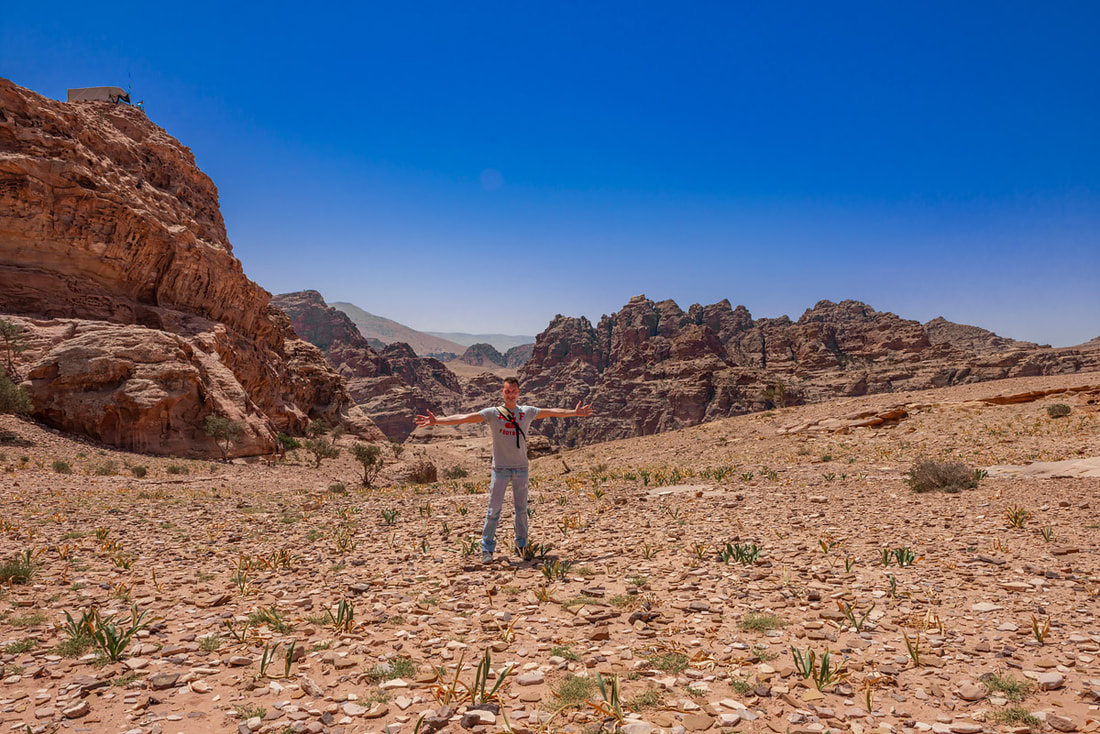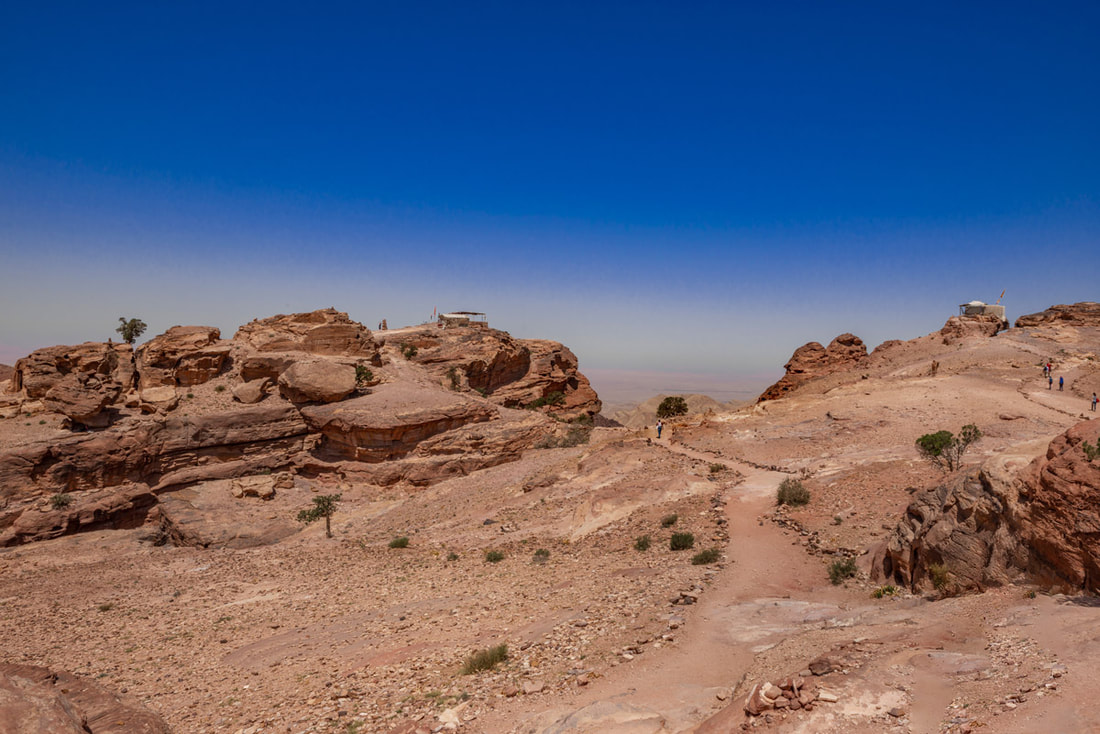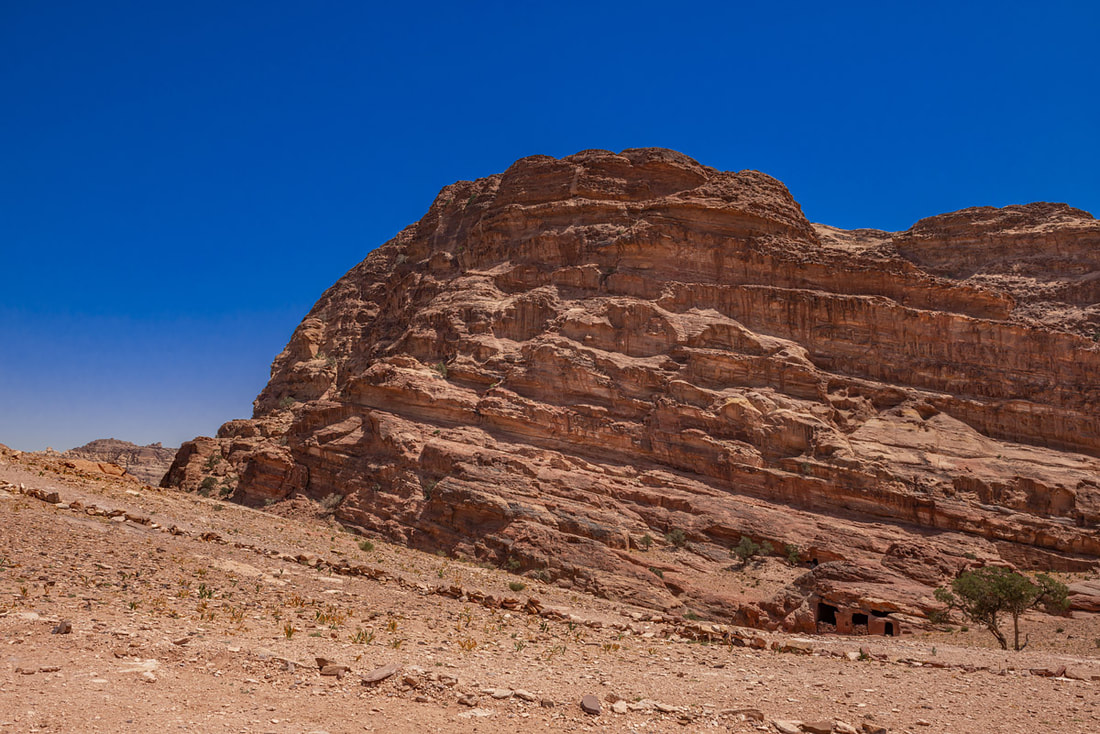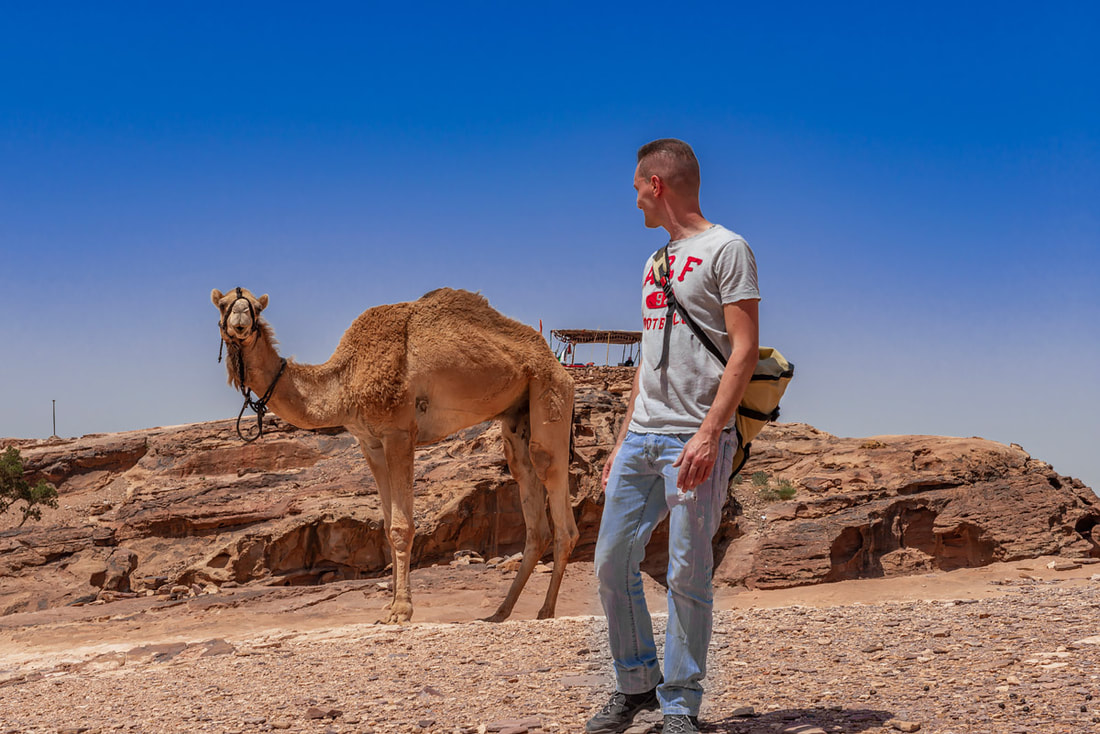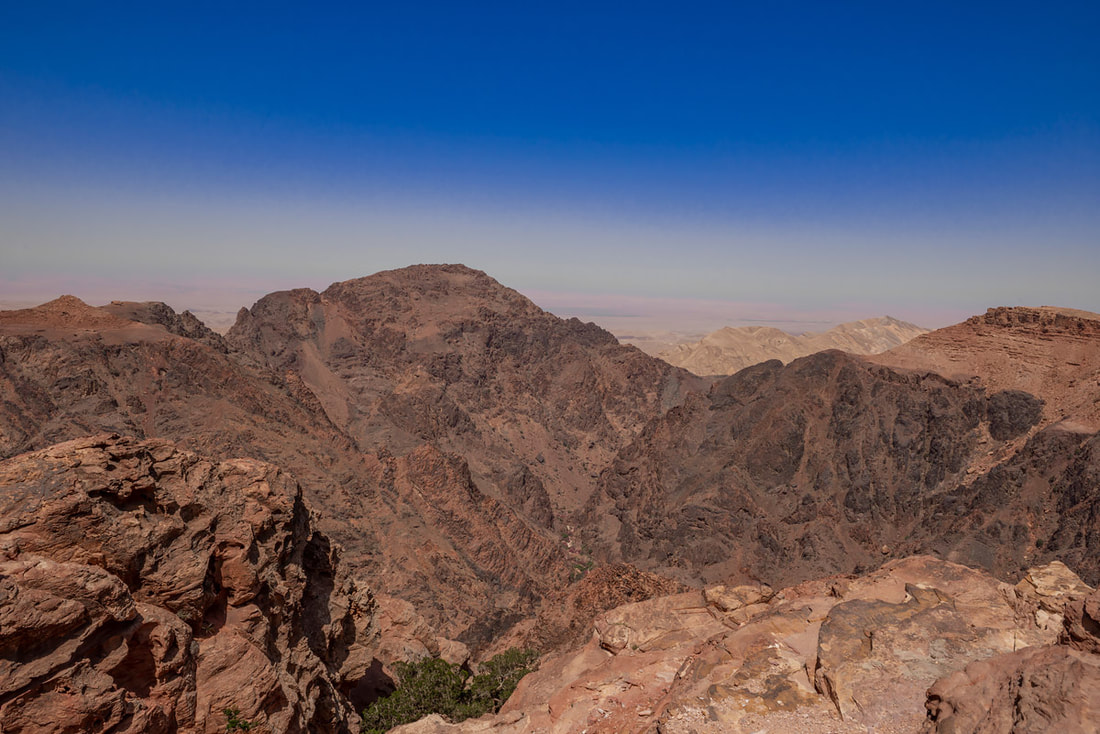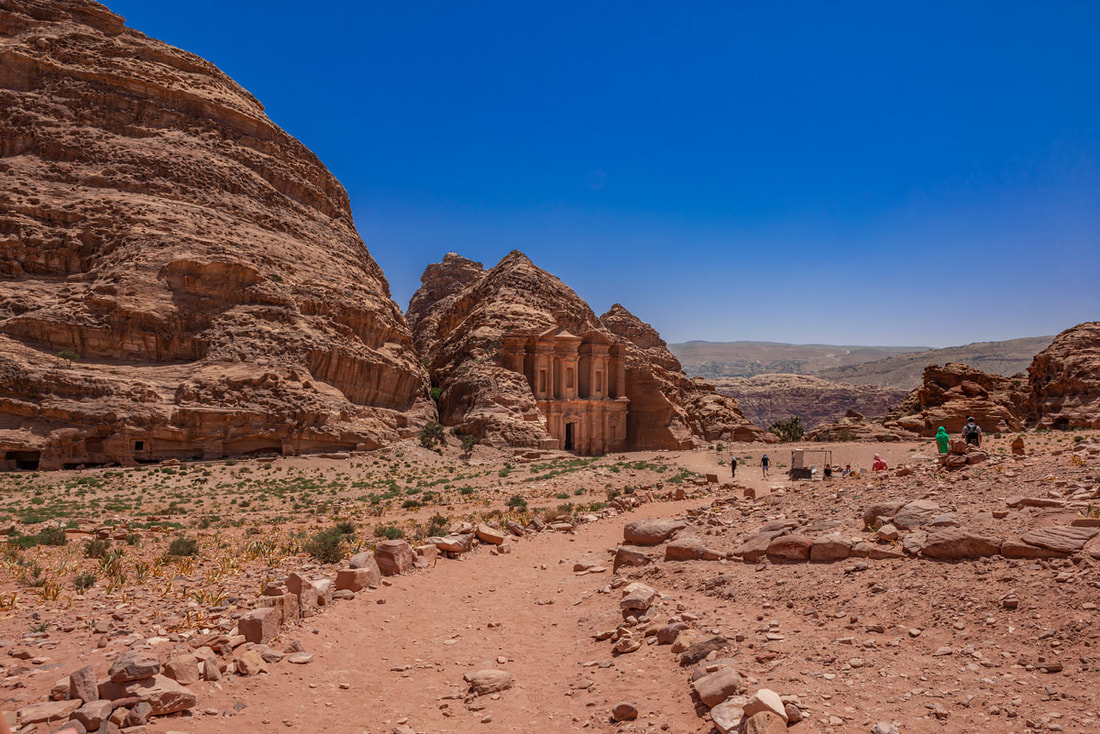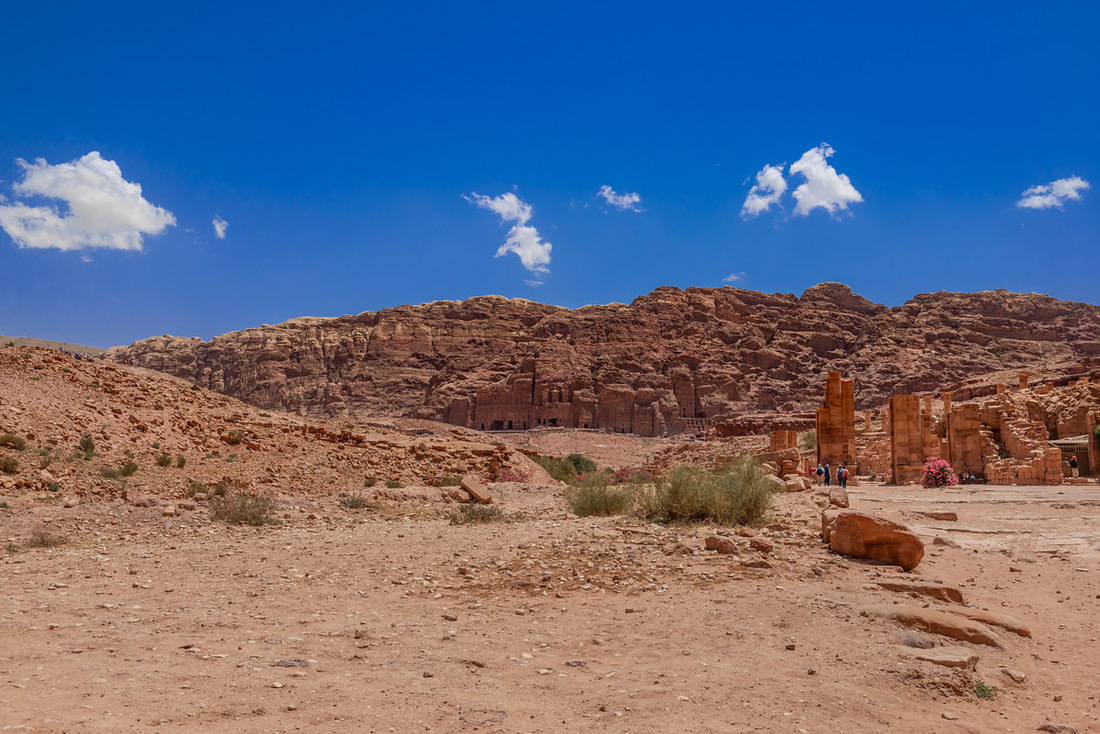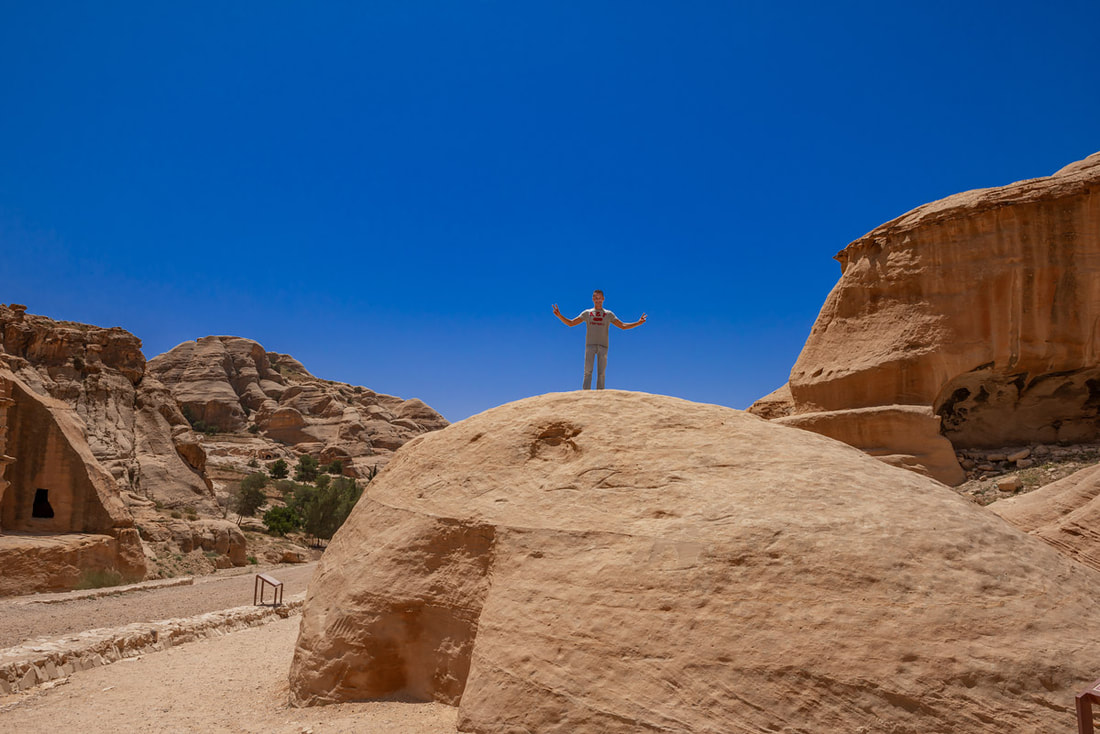By Antonio MalaraPetra is the third chapter of my beautiful adventure in Jordan, as for the previous post, I recommend you also read the first about Amman. In that first post I explained how and why I decided to make this trip and I introduced some people that I will also name in this and subsequent posts. Petra is a Unesco Heritage archaeological site and is also recognized as one of the seven wonders of the modern world. Although its history is very old, Petra was only rediscovered in 1812 by the Swiss explorer Johann Ludwig Burckhardt. Characterized by the Siq, a fissure along very high gorges, Petra has as its characteristic the presence of temples carved into the rock. Personally I discovered it thanks to the movie "Indiana Jones and the Last Crusade", it immediately struck me and I was very curious to see live that unique yellow temple, carved into the rock which is “The Treasury Palace” (El Khasneh). In fact, for me that particular type of architecture was something alien rather than terrestrial, something born from a laser cut rather than dug by men with rudimentary tools, obviously mine was a personal speculation. What I later discovered there was much more than what I imagined and it makes me ashamed for not having studied the place thoroughly before visiting it. Luckily I was able to see the most important things of the site thanks to the people who accompanied me who already had experience of the place. SiqAt 7 AM we were already in front of the site entrance, very scenic that looked more like the entrance to a park. On the advice of the experts but to my disappointment, that day I had to bring a single shoulder backpack with me, inside I had put several bottles of water, the cream to protect myself from the sun's rays, a hat and inside I would have stored the sweatshirt I needed only in the morning given the temperature range. The walk up to El Khasneh, my landmark of the site, was very long and complex, I had already learned this from people who had visited Petra before me. Immediately after the entrance there was a very wide and dirt road, surrounded by low hills that resembled American canyons. Fortunately, the road was slightly downhill and walking I noticed that there were already monuments there that had the peculiarity of being dug into the rocks. The first one we saw was the very large "Tomb of the Obelisk" which remained on our left as we descended. Even if the facade was now ruined, this monument was characterized by a series of four small obelisks placed on the upper part of the structure. Besides this, essentially also the other small monuments were tombs, some only appeared with openings towards caves, others had ornamental engravings, they didn’t follow a logic but were scattered everywhere. In that stretch the landscape was dominated by the yellow color where both the road and the mountains had mostly round shapes. After a very short time, perhaps because of the movement, perhaps because the sun was high by now I had to take off the sweatshirt remaining in short sleeves. I was a bit angry because I didn't really want to take that sweatshirt with me. The walk up to the Siq lasted about 40 minutes, before entering the gorges, we met locals tried to scrape together by offering photos or proposing the Siq crossroads on carriages pulled by small horses. Before venturing into the Siq the guide gave us some advice and the usual recommendations not to break the group, in short, stay close. The first thing I noticed upon entering the high mountains was the white balance of my camera. It was set to "auto" but taking the photos I found out that the colors of the rocks were completely different from reality. Thanks to a friend who also owned a DSLR, we noticed that setting the WB to fluorescent solved the problem. Back strong thanks to my total control over the camera, I had to opt to stay at the back of the group slightly behind the others. It was the only way to be free to take all the photos I wanted, unfortunately in doing so, I missed most of the explanations of the guide. The Siq immediately revealed itself in its spectacular variety, the first unusual thing I noticed were the plants and trees scattered a bit randomly. Seeing that green in the middle of dry rocks and in a desert scenery was unique. It was so contrasting that it seemed to have been planted there on purpose rather than created by nature. Although apparently uniform the rocks changed shape continuously, very high parts alternated with lower blocks, in some places they were all so high that not even a ray of sunlight filtered through. In other parts, however, they were modeled differently, some with a straight cut, others with more round shapes. In some places the road was very narrow and looking up you could see the two slopes of rocks that almost touched each other. The exciting part of the journey was also seeing how the spaces changed, walking along a very narrow stretch, suddenly a very large one opened up and then again a narrow one, like a breathing lung. A unique scenario in its changeability, very beautiful even when the front view was completely lost, when due to the proximity of the rocks, one had the impression that the road suddenly ended. At a certain point along the way in a stretch where the road widened to almost form a square, we found red desert sand. The classic yellow sand was scattered a little everywhere along the Siq but not the copper-red one which was really special. My sister started filling empty bottles with sand that she had brought with her for just that purpose. While walking in the final stretch of the Siq, before arriving at El Khasneh, I stopped taking pictures and started shooting a long video that took me from the gorges to the clearing in front of El Khasneh. I tried to do more or less the sequence watched in the movie, or at least create the same effect. Before I even got to that part that I considered Petra, this place had already amazed me with the Siq. A path, represented by high and changing gorges, this unique spectacle fascinated in itself, it was only the beginning but for me it was already a new discovery. El Khasneh (The Treasury Palace)After more than an hour of walking inside the Siq, I was finally in front of El Khasneh, I was like a child in his favorite playground! I started taking lots of photos, from so many perspectives until I got right under the temple. I don't know why, but I found it exactly as I expected it, I mean that both the temple and the surrounding area were exactly the same proportions I had imagined. Finally I was able to observe and photograph a work that fascinated me a lot. Trying to analyze the structure just by looking at it, I expected the cuts in the rock that formed the temple to be perfectly linear. Obviously there were imperfections and in any case, even live, such a great work could not be studied. However, the sensation was of something unconventional because rather than being built, it was excavated, that is, created through the extraction of something and not the addition. To be honest seeing the temple up close only made it even more mysteriously beautiful. One thing was evident; beyond the imperfections that didn't make it a structure cut with a shape of laser, however it didn't appear to be something built by this civilization. Besides this, I must say that the construction of the facade in general was done well, full of details. Both the columns and the engravings were perfect, those seemed made by a divine hand. Unfortunately it was not possible to enter the temple, it was fenced with notices displayed and, moreover, the entrance was quite high compared to the road, therefore not easy to reach even if you violate the prohibitions. The large area was really like a square, a meeting point, even if full of tourists it didn't give the impression of being a crowded place. Around there were those who sold souvenirs or those who offered a camel ride, the latter which had been forbidden to us for a matter of timing. In the general enthusiasm, the group had spread a little around the site so Don Valerio called everyone together to continue the visit. At that point I was amazed, for me what I had seen was already enough while in reality there was still more to see, the exploration continued. On to the right of the stone block where the temple was excavated, there was another road in the middle of the rocks, from there the descent continued. We walked down through "The street of the Facades" and to my amazement new monuments dug into the mountains kept appearing. One of these, had a high flat wall on which a facade was carved, here there were mostly tombs, although not as spectacular as the treasure, it was still beautiful. At around 9:30 AM we arrived at a point where the landscape changed its appearance, the gorges were finished and the road opened onto a large valley with mountains on either side, a scenario that always looks arid and desert. Here there were many souvenir shops built in wood and the area gave the impression of an area designed for relaxation, especially for older people who needed to rest a bit. However, even here you could see caves in the distance, parts of the mountain walls had holes, which were mostly than entrances. In the same area we visited the Nabataean Theater, also excavated in the rock. This structure was very original even if in fact its shape was like that of a classic Roman Theater. The fact that it was carved from a block of stone, however, made it unique, the entire city of Petra began to seem like a challenge that someone had launched to an architect. As if a powerful man had said "try to build an entire city but dig it into the rock". It was incredible, everything there was built following this principle. Monastery (al-Deir) After the visit to the theater, Don Valerio called everyone together again, this time whoever wanted to visit the Monastery had to follow Andrea and the group and had to leave immediately, otherwise it would not have been done in time. Don Valerio also specified that the visit was very tough because it was actually necessary to climb a mountain. There I asked myself the question again: how many things were there to see in Petra? Now aware that that visit was a continuous discovery, I accepted the challenge together with my sister, in all we could have been about eight people. Together with the new group I traveled a large unpaved and boundless road that gave the impression of being the arid valley of what was once a river or a lake. Along the way we could see, but without stopping, some monuments such as the "Great Temple" and the "Qasr al-Bint”. Passed these two site, we came up to a new mountain that had a central inlet. In that cove there were some rocky stairs, from there began the famous climb to the Monastery. I started climbing with the others without having any idea where I was going and what kind of path was in front of me. The path was steep, the stone steps uneven, however I managed to climb well thanks to the shoes that had a good grip. As I climbed I stopped to take pictures in the points that I considered most original, this led me to always be overtaken by someone in the group. However, my pace was faster so first I started picking them up and then taking them off one by one even though I made more stops. While I was going up and especially in the narrower parts, I happened to see people who made the descent aboard mules. These were guided by a rope by locals who normally preceded them on foot. Probably the mules were by now experts, but I must say that in some places it was noticed that they had difficulty in getting off. I don't know if anyone has ever fallen on the way but personally I would not have trusted to make the descent aboard the animal even for a moral question. During the climb the scenarios followed one another in various shades, I passed by a stretch where a round rock was wedged between two nearby rocks forming a kind of tunnel. Other rocks with had a much smaller base than the upper one, this didn’t make it clear according to which principle they were standing instead of breaking off and rolling down. In general, the rocks were shaped in many ways, then there were also plateaus with breathtaking views. I passed a stretch where in fact you crossed a canyon over a very high valley, at that point you could lean out because there was no type of protection, that stretch was really dangerous. The climb had been hard, I drank until all the bottles of water were finished, I took very short breaks to put the protective cream only on the back of the neck, the only one exposed to the sun, in fact I never used a hat what who had all scolded me since morning. I passed a girl in our group who had stopped to take a breath and I continued arriving first at the destination. I realized it was “the place” because the stairs were finished and I found myself on an immense plateau surrounded by the usual jagged rocks, one of which remained to my right. At that point I just had to go in search of the Monastery even if I didn't even know what it was and how it was made, probably maybe it was that plateau, I thought. I went down some steps to reach the flat part and bypassing the large rock that was next to me on the right, I found myself in front of the Monastery. This view was certainly an even greater surprise than the El Khasneh, in fact in front of my eyes there was another temple very similar to the Treasure always excavated in the rock, a work of which I didn’t know existed until ten meters before. The Monastery was perhaps a little lower but wider, it had rocks on the sides but it was in a much more spacious context, you could look at it from many different perspectives. While I was photographing it, the others in the group slowly arrived, I immediately communicated my surprise with them, feeling a bit ignorant. The Monastery also had a central door higher than the access road, but here there was no prohibition so we decided to go inside. By helping each other we managed to get inside where there was only a large square room, with a kind of altar also carved into the wall in front of the entrance. We didn't have much time there because there was actually nothing to see or do. Once we got off, Andrea directed us on a wide slightly uphill path that took us to the last place to see that was left up there. This time in the desert scenery of the path there was the presence of some green plants, which created the same visual as like those in the Siq. The path took us to the top of a panoramic peak, here everything was wild and unprotected, it was the most dangerous observation point ever seen. The small area overlooked a beautiful and very vast mountain range, a movie scenario like "The Lord of the Rings", here there were also some tourists, busy taking “extreme” photos. In fact, in addition to the "safe" part to admire the view, there was also the "excessive" one, in fact the strip of large stone under our feet stretched, clinging to a soaring point upwards that was just above the void. When the peak over the mountain was empty, without hesitation I gave the camera to my sister and told her to take some pictures of me. I got to the edge and it is impossible to describe the beauty and thrill it felt to be suspended in the void. Moving away a little from the edge, I performed “The Christ the Redeemer” pose, something I often do in places like this, a pose that I love and that for me is a quote not a blasphemy. When I turned around I saw my sister panicked that she was begging me to go back because she was afraid I might fall. As we walked back I was still thinking about the view of the mountains and those rocks, I remember that I would have liked to have a drone and launch it there, unfortunately then drones were not yet popular and in the advanced stage they are today. The descent to the meeting point with the others lasted about an hour, contrary to what one might think it was almost as tiring as the climb. Fortunately, I found a kiosk, I bought some water and during the break I also spread a little cream but this time on my face. When we arrived in El Khasneh we all resumed the slow return through the Siq together and we arrived at the main road which was time for lunch. Before leaving, I wanted to do something that I hadn't been able to do early in the morning during the descent. I climbed a rock that formed a sort of round roof, there I posed for a few photos that my sister patiently took of me. While we were doing this one of the group, who was also a doctor, scolded me again for not using the hat; "Tonight you will be like lobster and you will be our dinner". He made fun of the fact that I would burn my face and at that moment I had accepted the challenge, that afternoon the hard visit to the Wadi Rum desert was waiting us and I was ready to arrive until evening but not like a lobster. Technically, my visit to Petra is an example of how one should not visit a place. Even if I had superficially studied the place, my desire for exploration was once again suggested by a movie and by a popular rather than cultural knowledge. However and thanks also to the expert people who accompanied me, I was able to visit Petra as a true explorer of ancient times, walking, discovering places I didn’t know existed and amazed in front of the Monastery as if I had discovered it myself. Pictures: Antonio Malara
Camera: Nikon D800
0 Comments
Leave a Reply. |
